Argentina’s vibrant capital city, Buenos Aires, is one of the world’s great travel destinations! It is known for beautiful, well-preserved Spanish & European-style architecture and a rich cultural life. In fact, the sensual dance of tango originated here in the city’s La Boca district.
 I recently spent three glorious days exploring Buenos Aires on my first visit to this delightful city. It is filled with many great things to see & do plus the city is very walkable – which I did a lot of! Taxis are plentiful for reaching sights that are a bit further away. I found the local people (called porteños) to be friendly, fun and helpful.
I recently spent three glorious days exploring Buenos Aires on my first visit to this delightful city. It is filled with many great things to see & do plus the city is very walkable – which I did a lot of! Taxis are plentiful for reaching sights that are a bit further away. I found the local people (called porteños) to be friendly, fun and helpful.
In this post, I share 21 of my favorite Buenos Aires sights & experiences to help you plan your own visit to this charming South American city. I hope they will give you a good flavor of the city & why you should consider adding Buenos Aires to your travel “must see” list.
1) Start with a Walk Around the Plaza de Mayo
Plaza de Mayo is a great place to start your touring. Located in the center of Buenos Aires, this large plaza is lined by some of the city’s most important and beautiful buildings. Here you will find Casa Rosada, the main cathedral and the Cabildo (mid-18th C. town hall – which is now a museum).
The plaza was named in honor of the month – May – when Buenos Aires first declared its independence in 1810 from Spain. Much of the drama throughout Argentina’s history has taken place here. Even today, the plaza is the scene of frequent political rallies and peaceful (usually!) demonstrations (see #20)
2) Admire the Casa Rosada Presidential Palace
Another Buenos Aires landmark is the Casa Rosada (“pink house”) with its quite distinctive pink façade. The office of the Argentine president is located here. It was from these ornate balconies that President Juan Perón & First Lady Eva Perón (aka Evita) addressed the adoring masses gathered 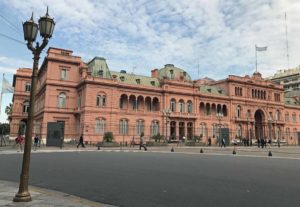
In fact, the 1996 movie “Evita” starring Madonna in the title role was filmed here. Madonna crooned the classic song “Don’t Cry for Me, Argentina” from one of the balconies! I was surprised to learn that this side of the palace facing Plaza de Mayo is actually the back of the building.
3) Explore Inside the Metropolitan Cathedral
The beautiful Metropolitan Cathedral, built in 1827, is historically important for two reasons. First, you will find the mausoleum inside of General Jose de San Martin, Argentina’s most revered hero. He was the prime leader in their successful struggle for independence. The entrance to the ornate tomb is guarded by two soldiers in regal uniform.
Secondly, the Cathedral is the former “workplace” of the newest Roman Catholic pope, Pope Francis! Formerly the archbishop of Buenos Aires, Cardinal Jorge Mario Bergoglio was named Pope in March 2013, assuming the name Francis. Born in Buenos Aires, Francis is the first pope to hail from the Americas and the first to belong to the Jesuit order. Certainly, the very popular Pope Francis is a source of great pride for the Argentine people.
4) Cross Avenue 9 de Julio – The World’s Largest Street
This amazing boulevard is considered by many to be the world’s widest street. The attractive tree-lined avenue is only 1 km long, but it is 16 lanes wide! It will take you at least 2 traffic-light cycles to fully cross, but luckily there are raised pedestrian islands along the way so it’s plenty safe.
The street widening project began back in 1936 but it took until 1980 to fully complete. The initial designers modeled the avenue after Paris’ Champs-Elysees but made it even wider (apparently, in an act of cross-Atlantic competition)! It was named after July 9th, Argentina’s independence day (in 1816). The avenue is lined with beautiful buildings in a wide variety of architectural styles.
5) Get a Selfie with the Obelisk & BA Hedges
The towering Obelisk is another classic Buenos Aires’ landmark. It soars 67 meters (220 feet) above the Plaza de la Republica, which is located along the Ave. 9 de Julio. Dedicated in 1936, the Obelisk (Obelisco) has been compared to America’s Washington Monument. Make sure to get a photo taken by the nearby huge green hedges shaped into the letters BA!
6) Take a Tour of the Teatro Colon Opera House
Teatro Colon is considered one of the world’s greatest opera houses. Built in 1908, its acoustics are claimed to be among the world’s top five concert venues. Occupying an entire city block, the theatre can seat 2500 people in classic red velvet seats. Not surprisingly, Buenos Aires’ beautiful opera house is another source of pride for porteños – in addition to their beloved pope!
Visitors can attend a concert or take a behind-the-scenes-tour of Teatro Colon. Guided tours are given daily between 9a-5pm. They start every 15 minutes and last 50 minutes. Unfortunately, I didn’t have enough time to take the formal tour so I just did a quick walk through the main lobby area. But I have added the theatre tour to my list for next time.
7) Get Lost Wandering Around La Recoleta Cemetery
La Recoleta Cemetery, arguably Buenos Aire’s #1 visitor attraction, is definitely a must see! Covering four city blocks, it contains around 4800 mausoleums of generations of Argentine elite. You will find tombs of past presidents, influential politicians, military heroes, famous writers and other notable people.
Created in 1822, this “City of the Dead” was Buenos Aire’s first public cemetery, although it quickly became exclusive. You can wander the cemetery for hours, winding through a maze of narrow “streets” lined with elegant marble sarcophagi and impressive statues. I loved the wide, eclectic range of architectural styles – there are no “cookie cutter” tombs here!
8) Pay Homage to Evita’s Tomb at La Recoleta
Actress-turned-First Lady Eva Duarte Perón (Evita) is without a doubt Recoleta Cemetery’s most famous resident! After her death in 1952 from cancer, she was eventually buried in her family’s mausoleum. The Familia Duarte tomb is quite plain in comparison to the ornate splendor seen all around La Recoleta. Her tomb’s exterior is covered with bronze plaques and a mix of artificial and fresh flowers lay by the door as a tribute to Argentina’s beloved icon.
Evita’s tomb draws a steady stream of visitors who come to pay their respects and snap the mandatory photo. Even with the cemetery map (given to all visitors upon entry), it can be hard to find the tomb if you’re not on a tour. But never fear – just follow the crowds! You can also ask cemetery caretakers or other visitors who will happily point you in the right direction.
9) Be Dazzled by a Professional Tango Show
Tango reigns supreme in Buenos Aires! When people think of Argentina, it’s often the sensual and melancholy tango (dance & music) that comes to mind. Begun in the mid-1800s by lonely immigrants in the backstreets of Buenos Aires, tango is Argentina’s most famous cultural export.
Visitors to Buenos Aires can experience tango in a variety of forms – such as watching a tanguero performing on tourist-filled streets for spare change (see #11) or paying a visit to a milonga (tango dance hall) filled with locals. Best known are the tourist-oriented, spectacular tango shows like the fabulous one I attended at El Viejo Almacen (one of the classic theatre venues).
These professional shows are both entertaining and awe-inspiring, with dancers displaying incredible grace and athleticism. My show (lasting 1 ½ hours) featured 4 different tango couples (in a variety of beautiful costumes), a 5-piece orchestra, two singers, and a folkloric music segment. I highly recommend attending one of the quality tango shows – it’s definitely worth the money!
10) Stroll Down La Boca’s Famed “El Caminito”
Yes, it is true. El Caminito – La Boca’s famed one-block long pedestrian lane – is filled with tourists. There are also folks catering to the tourists, like artists selling their colorful painting and street buskers performing for tips. However, El Caminito’s cobblestone lane has a certain charm and its brightly painted shanty houses are its main draw.
- Photo on left: A mannequin of the pope waves from the balcony of a very narrow & colorful building on El Caminito
The La Boca neighborhood was next to the city’s principal port in the mid-19th century. It was settled by poor Italian (mainly from Genoa) & Spanish immigrants. They initially used leftover marine paint begged off the ships to colorfully paint their tenement shacks, which were covered in corrugated metal siding. Fast forward to today. Even though some may call El Caminito a “tourist trap”, it’s certainly worth a short visit.
11) Take Photos of La Boca’s Street Tango Dancers
El Caminito is a good place to get your tango street vibe. This makes sense since the multi-cultural immigrant La Boca neighborhood is where tango began. Factory and port workers would gather to dance in the central halls of the tenements and vie to grab the attention of the few women available at the time.
Today in La Boca, you will find tango dancing couples posing on the cobbled streets for tourist cameras. The dancers might even ask you to pose with them or you can get your photo taken behind colorful cardboard tango cut-outs. While there, you may also get a feel for the other Argentine national obsession – futbol (soccer for us Americans). The source of more local pride – Argentina has won two soccer World Cups & two Olympic gold medals!
- Left: the cardboard tango cutouts have a real life couple posing for the camera! Above: Store selling soccer items in La Boca. Note the mural of a tango dancing couple on the wall
12) People Watch & Window Shop on Calle Florida
Calle Florida is Buenos Aires’ main shopping street. During the day, this busy pedestrian street in city center bustles with shoppers, street vendors, hustlers, tourists, and office workers alike. The one-kilometer-long street runs from Plaza San Martin to near Plaza de Mayo. It offers a wide variety of retail stores, shopping arcades and restaurants.
It’s a great place for people watching as you use Calle Florida to walk from one important Buenos Aires sight to another. Along the way, you’ll see quite a few “arbolitos” (“little trees”) – street money changers hoping to get their hands on some high-demand US dollars. Buyer beware!
13) Check out the Ceiling Murals at Galerías Pacífico
Located along Calle Florida, Galerías Pacífico is a lovely indoor shopping mall with upscale stores and a large food court. Built in 1889, it covers an entire city block. A central cupola was added in 1945, along with the painting of beautiful ceiling murals (which were restored in 1992). I popped into Galerías Pacífico my first night in Buenos Aires to get out of the rain, gawk at the murals, and enjoy a delicious steak meal (photo below) at a restaurant in the food court.
14) Enjoy Tasty Beef at a Parrilla Steakhouse
- One of the parrillas on Calle Florida
- My friendly waiter posing in front of my steak dinner
Argentine beef is some of the best in the world! With apologies to my vegetarian readers, touring Buenos Aires is not complete without enjoying a delicious beef dinner at one of the city’s hundreds of parrillas (steakhouses). They run the full range of ambiance and price – from neighborhood joints to upscale restaurants.
Argentines have certainly perfected the art of grilling beef on the asado (barbecue). One of the popular thick and juicy cuts of beef is “bife de chorizo” (like sirloin), which is what I had twice! Be sure to add some “chimichurri” – a tasty sauce made with olive oil, garlic and parsley – to your beef. You may also want to order a glass of Argentina’s famed Malbec wine to go with your meal.
15) Step Back in Time at Café Tortoni
Buenos Aires has a serious café culture, thanks to its European heritage. Some cafes have been around for over 100 years. Café Tortoni is the city’s oldest and most famous café, opened in 1858 by a French immigrant. This classic café retains much of the original furnishings.
- Staff waiting outside the Cafe Tortoni door to greet visitors / On the right is a old poster of the Cafe seen in one of the Cafe’s back rooms. Definitely has a Parisian look
My Lonely Planet guidebook advised that Café Tortoni is heavily visited by tourists nowadays, making it a bit of a tourist trap. Still, they wrote, “it is practically an obligatory stop for any visitor.” I would agree! I was happy to take a short break from sightseeing to view the Café’s beautiful interiors and sit down to enjoy a delicious warm apple crisp ala mode. Yum!
16) Explore Puerto Madero with a Power Walk or Good Meal
Puerto Madero is both a “failed port” and Buenos Aires newest neighborhood. In 1898, the city’s mudflats were transformed into a series of modern basins (dikes) and harbors. By 1926, all port activities had moved to Puerto Nuevo. Beginning in the 1990s, the area has been wonderfully redeveloped.
The port’s old brick warehouses have been converted into some of the city’s trendiest lofts, offices and hotels, along with upscale restaurants and cafes offering water views. Puerto Madero is a great place to put on your walking shoes and take a scenic stroll or brisk walk on the vehicle-free cobbled lanes along the dikes like I did at dusk my first evening in town. Perhaps, you might even stay for a delicious dinner.
17) Marvel at the Floralis Genérica Sculpture
I was intrigued by photos of the Floralis Genérica, a large metal flower sculpture in one of Buenos Aires many beautiful parks. I knew I had to go see this unique creation in person and I’m glad I did. The gargantuan 75-foot-tall aluminum and steel flower sits in a pool of water in the center of Plaza Naciones Unidas, next to the National Museum of Fine Arts.
The solar-powered flower with six petals was designed and funded by Argentine architect Eduardo Catalano in 2002. Apparently, the petals used to open and close like a real flower revealing four long stamens inside. The petals would open every morning and close again at sunset – that is until the gears broke! It’s still worth seeing the now-stationary flower and checking out the cool reflections seen in the metallic petals.
18) View Frida Kahlo’s Art at the MALBA Museum
I will confess I am not a huge museum person but I do like to make quick visits to “must see” museums on my travels. The Museo de Arte Latino-Americano de Buenos Aires (MALBA) in the Palermo district is one of those. Considered one of Buenos Aire’s finest museums, it features contemporary Latin American & Argentine art.
- On right: Frida Kahlo’s painting “Self-Portrait with Monkey and Parrot” (1942)
MALBA is also known for its modern, airy architecture. Plus, it offers the chance to commune with paintings from famed Mexican duo Frida Kahlo & Diego Rivera. I was short on time, so I made a beeline to view Frida Kahlo’s treasured painting (above) and one by Diego Rivera. It was definitely a quickie visit, but I’m glad I saw this pretty museum.
19) Visit Museo Evita To View Evita’s Fascinating Life
Known simply as “Evita,” Maria Eva Duarte de Perón (1919-1952) is one of Argentina’s most revered political figures. She married Colonel Juan Perón in 1945 just before he won the presidency in 1946. Perón served two terms, assisted by Evita’s charisma and her outreach to the nation’s poor. She created the Fundación Eva Perón which provided a variety of social services to those in need.
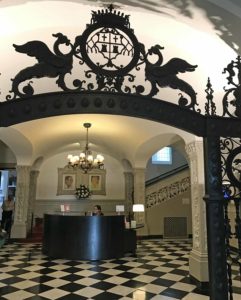
Museo Evita is housed in a beautiful early 20th C. mansion, which was bought in 1948 by Evita’s foundation to provide temporary shelter for women & children. I loved touring this compact museum and learning about Evita’s fascinating life through videos, historical photos, books, and newspaper headlines. Plus, there were many pieces from Evita’s beautiful wardrobe – dresses, shoes, handbags, hats and blouses – on display behind glass. If you’re an Evita fan like me, you don’t want to miss this museum!
20) Drop in on a Peaceful Street Protest
As mentioned, Plaza de Mayo is the preferred site for Buenos Aires’ frequent, peaceful demonstrations. Apparently, street protests – done for a wide variety of reasons – are a well-known pastime for porteños. One day, I witnessed a demonstration (see photos) by workers protesting the sudden closing of their factory. Plaza de Mayo was filled with people, signs, and music. I was able to walk among them, take photos, and feel quite safe!
In addition, the “Madres de la Plaza de Mayo” protest has been taking place in the plaza every Thursday afternoon since 1977. It is led by mothers of ‘disappeared children’ from the Dirty War military dictatorship (1976-1983). Recent presidents are sympathetic to the issue, so the mothers continue to march as a reminder of the past and for other social-justice causes.
21) Indulge Yourself with Popular Argentine Sweets
Last but not least, make sure to indulge your sweet tooth with one of Argentina’s popular sweets. There is delicious “dulce de leche”– a milk-caramel sauce that is drizzled on everything from cake to flan to ice cream. And because of Argentina’s Italian heritage, their ice cream is also excellent. Buenos Aires’ many heladerías (ice cream shops) will tempt you with a wide array of tasty flavors. I happily succumbed quite a few times – I do love good ice cream!
Happy Travels to Buenos Aires!
Here’s a Recap of The 21 Must-Do Experiences in Buenos Aires:
- Start with a Walk Around the Plaza de Mayo
- Admire the Casa Rosada Presidential Palace
- Explore Inside the Metropolitan Cathedral
- Cross Avenue 9 de Julio – The World’s Largest Street
- Get a Selfie with the Obelisk & BA Hedges
- Take a Tour of the Teatro Colon Opera House
- Get Lost Wandering Around La Recoleta Cemetery
- Pay Homage to Evita’s Tomb at La Recoleta
- Be Dazzled by a Professional Tango Show
- Stroll La Boca’s Famed “El Caminito” Lane
- Take Photos of La Boca’s Street Tango Dancers
- People Watch & Window Shop on Calle Florida
- Check out the Ceiling Murals at Galerias Pacifico
- Enjoy Tasty Beef at a Parrilla Steakhouse
- Step Back in Time at Café Tortoni
- Explore Puerto Madero with a Power Walk or Good Meal
- Marvel at the Floralis Generica Sculpture
- View Frida Kahlo’s Art at the MALBA Museum
- Visit Museo Evita To View Evita’s Fascinating Life
- Drop in on a Peaceful Street Protest
- Indulge Yourself with Popular Argentine Sweets
For more info, check out: Buenos Aires’ Tourism Website
Comments: Have you visited Buenos Aires? If so, what were some of your favorite sights or experiences there? If not yet, is it on your list? And which ones would you most want to do?

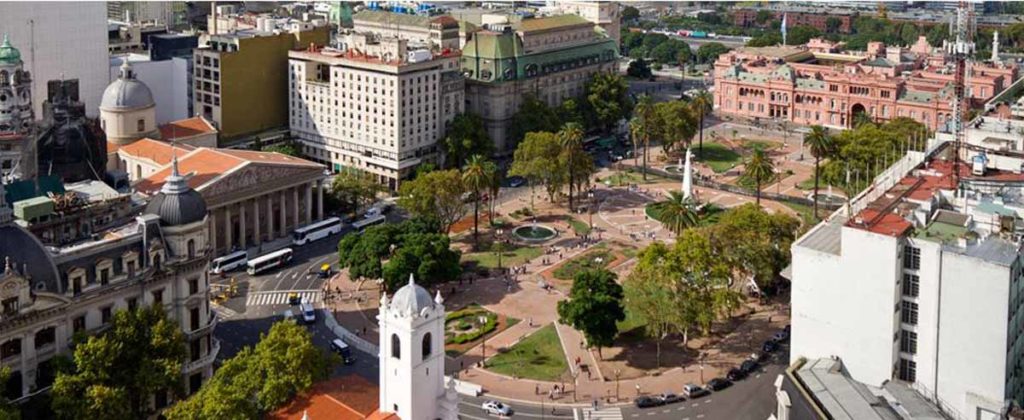
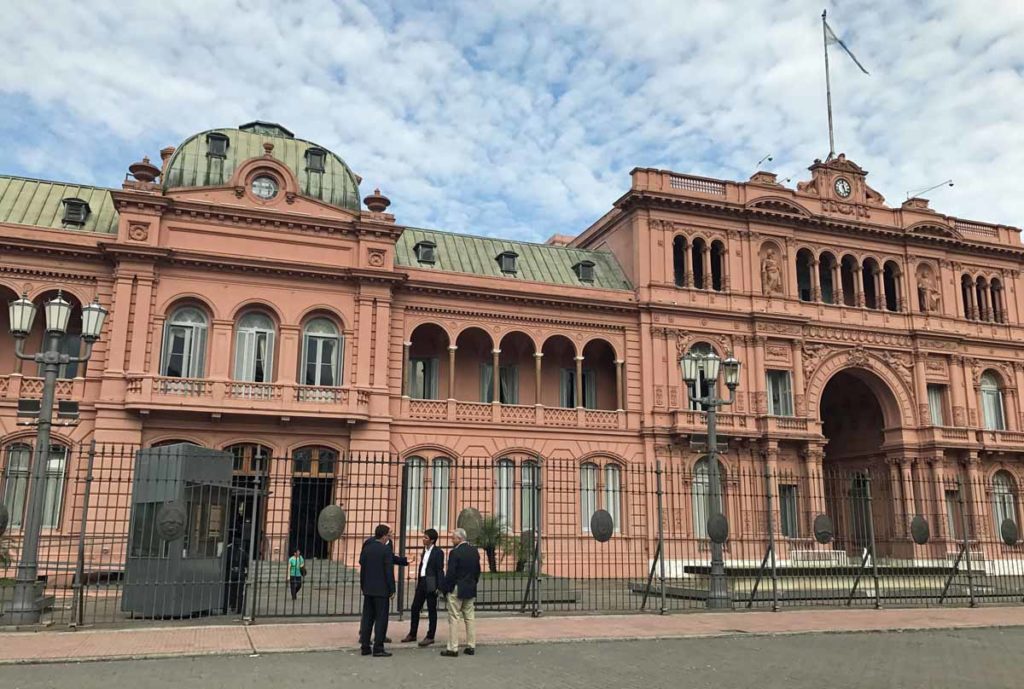
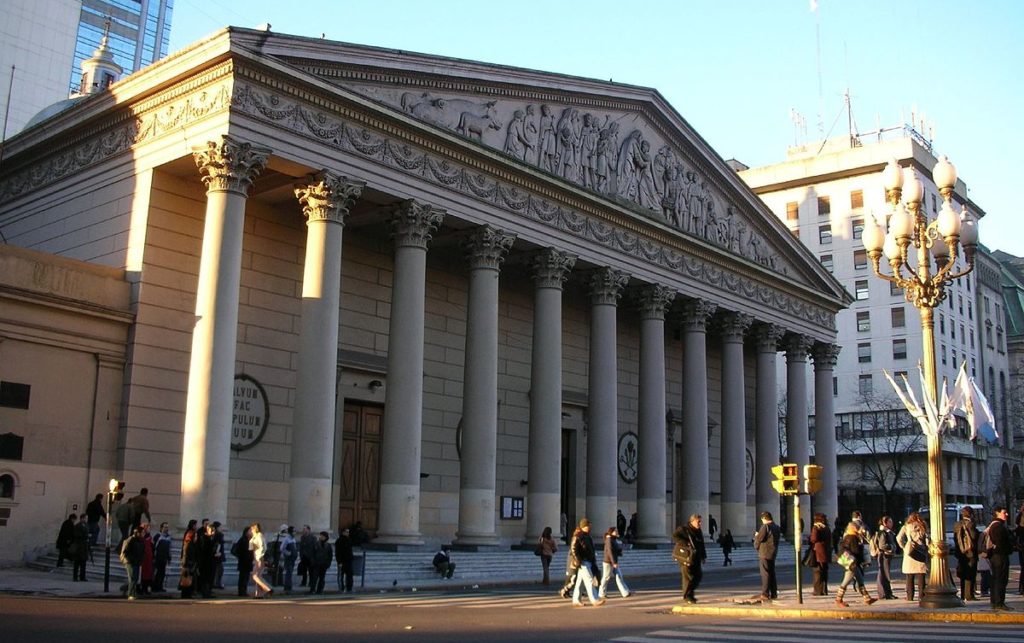
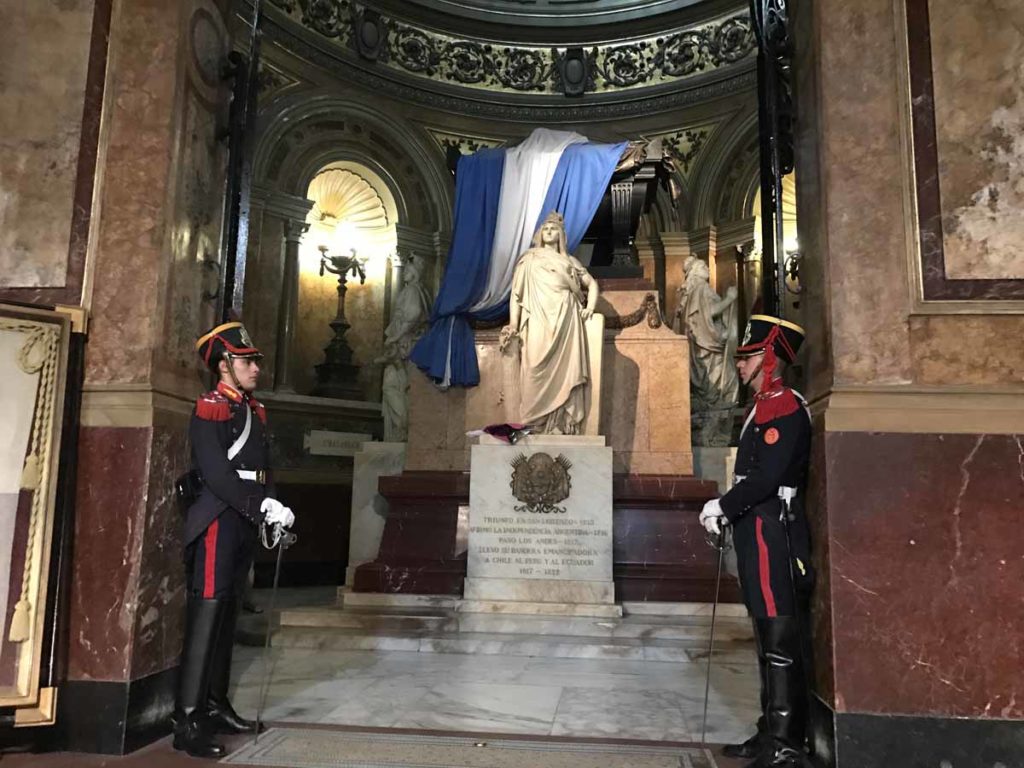
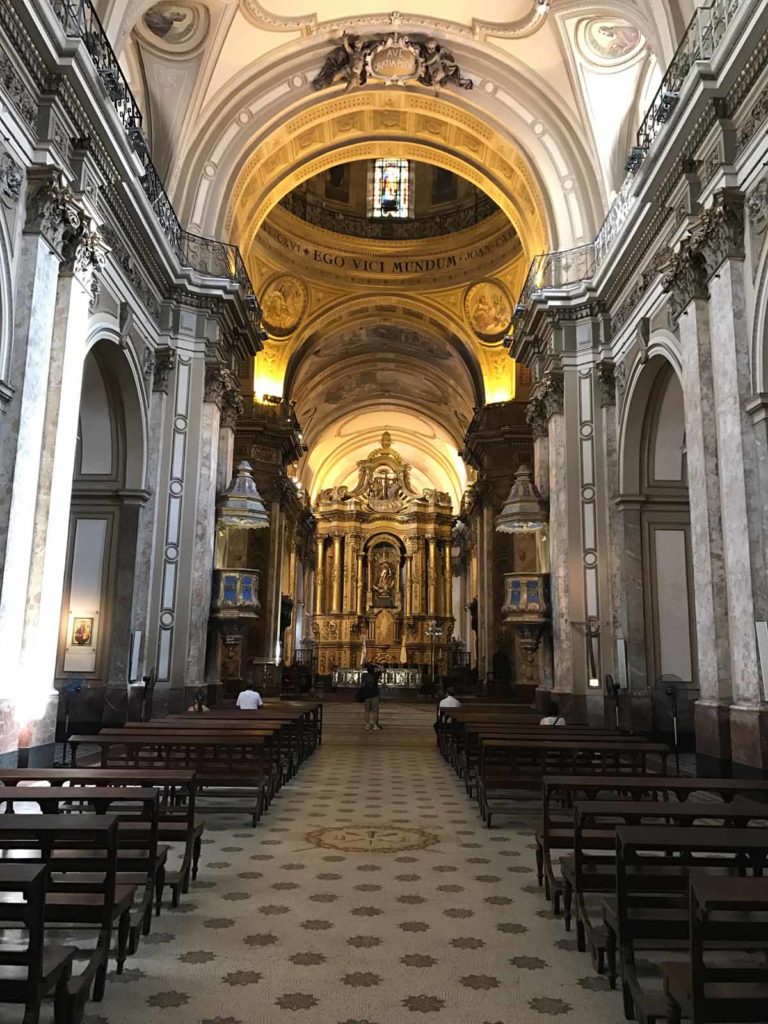
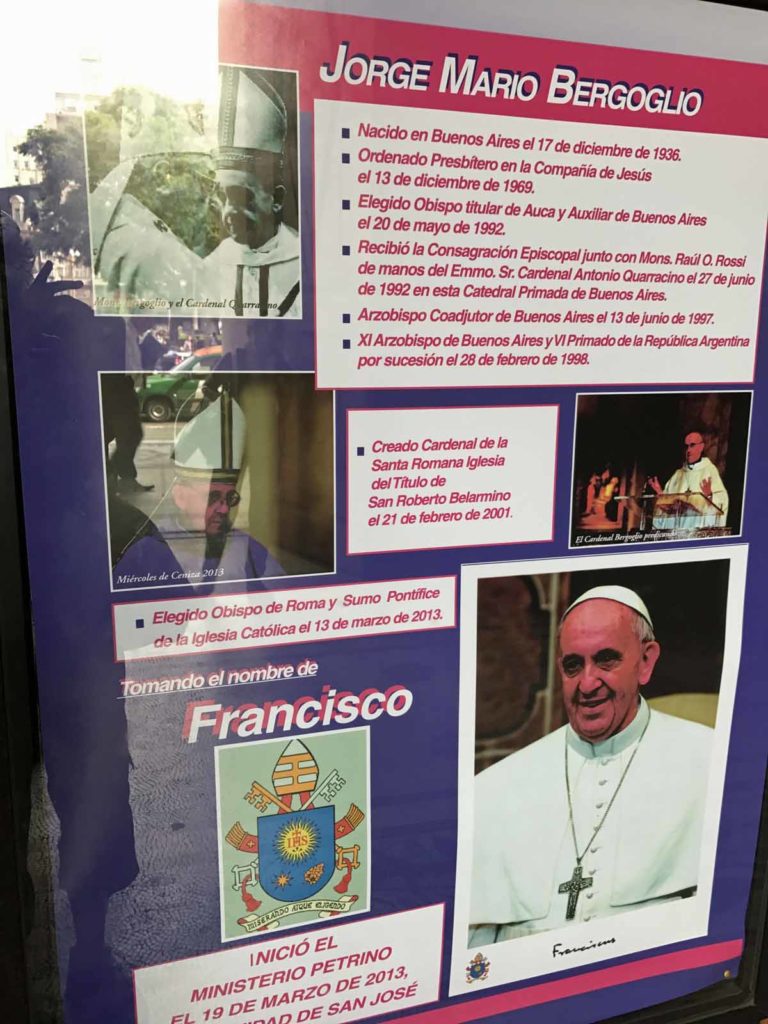
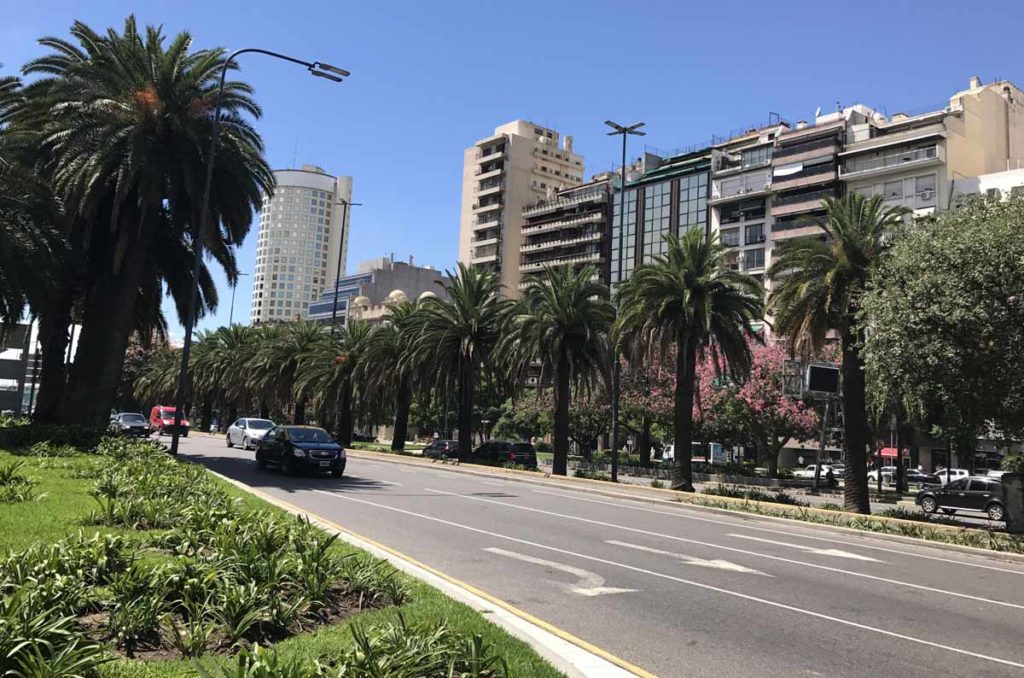
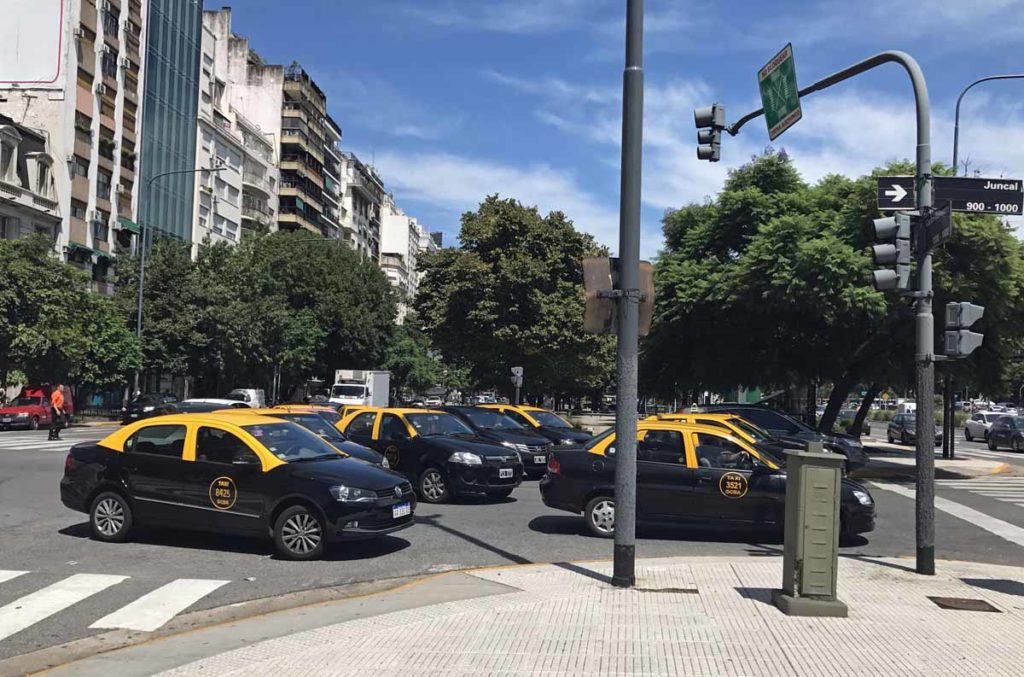
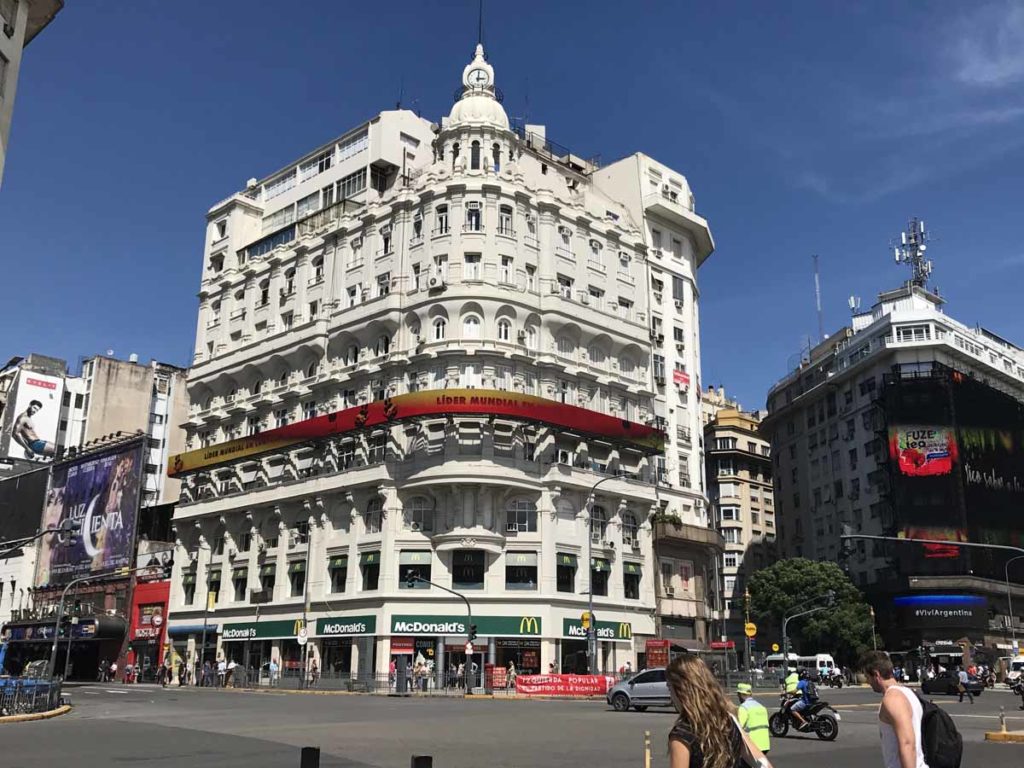
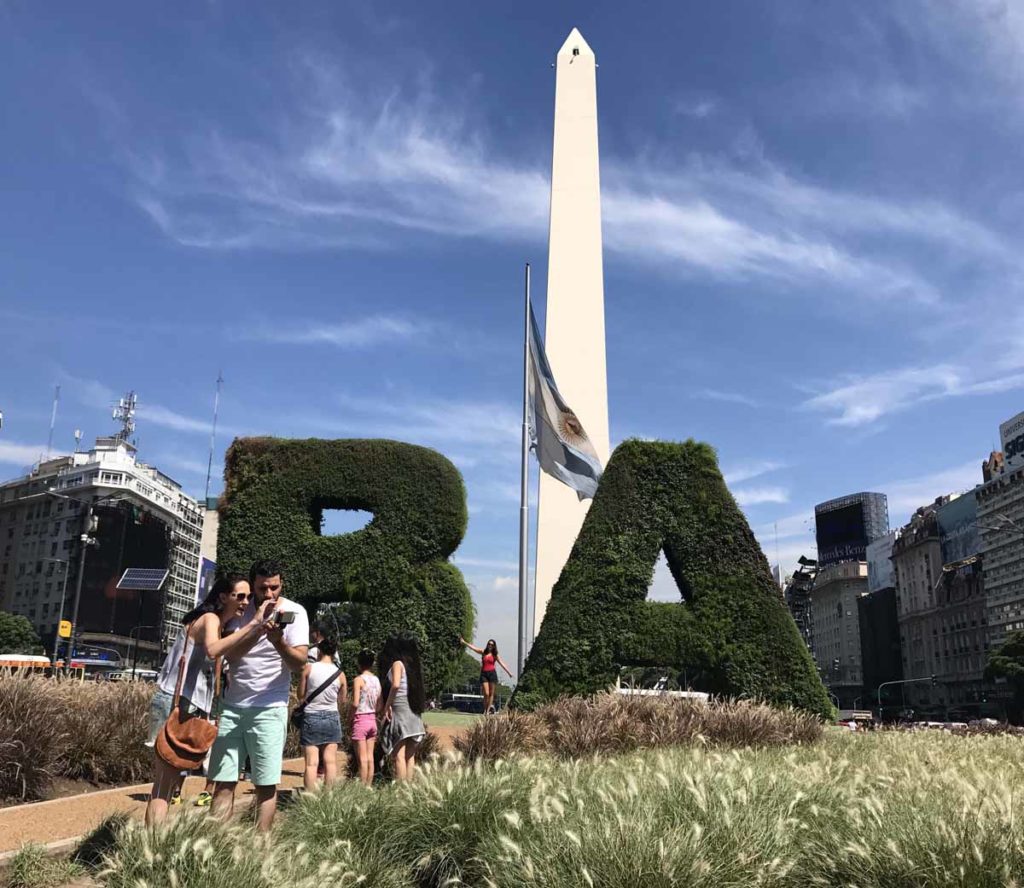
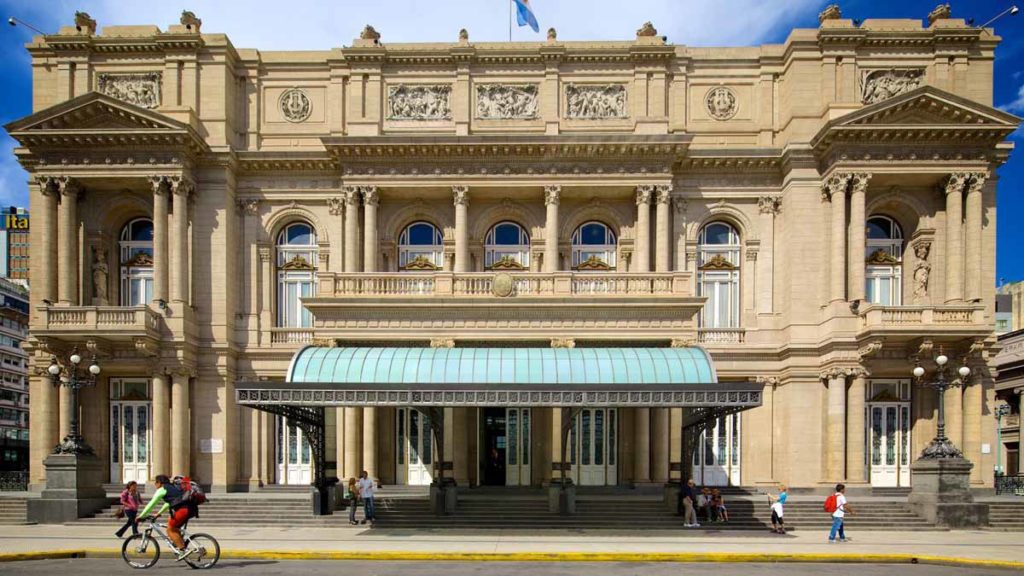
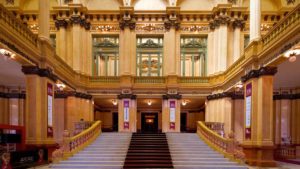
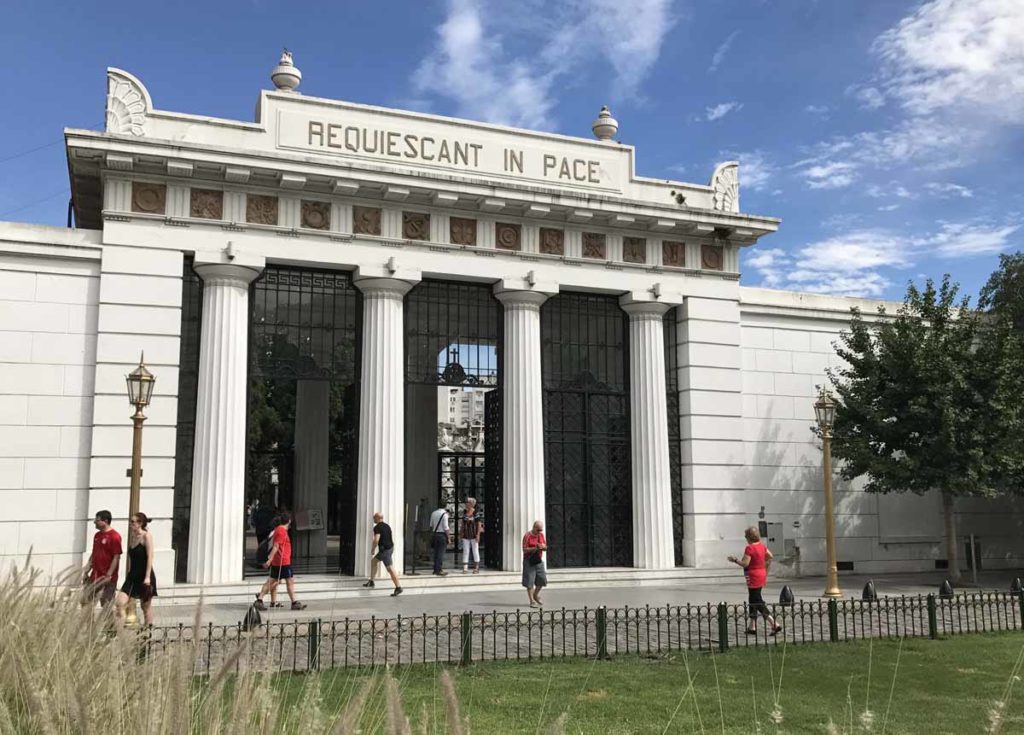
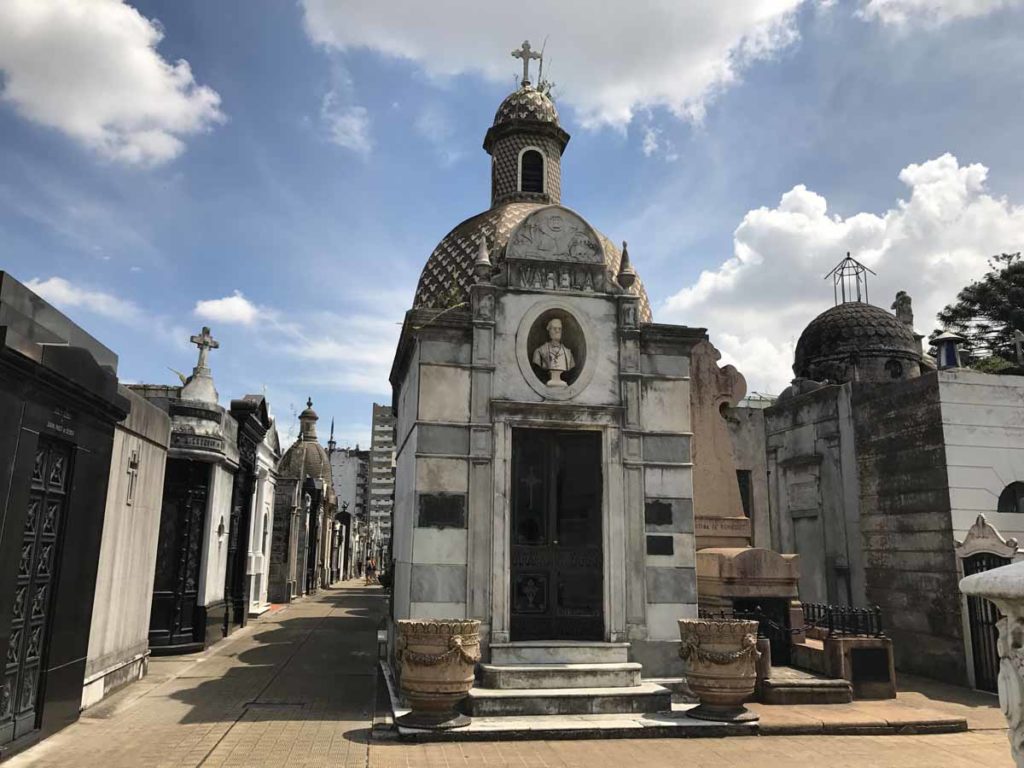
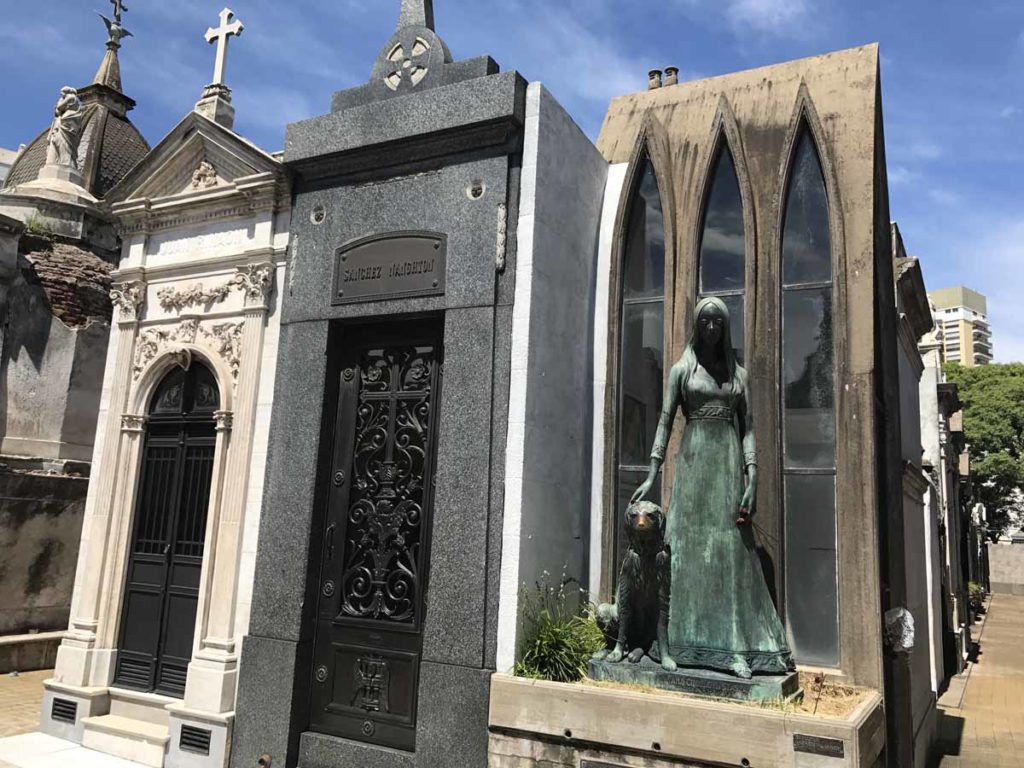
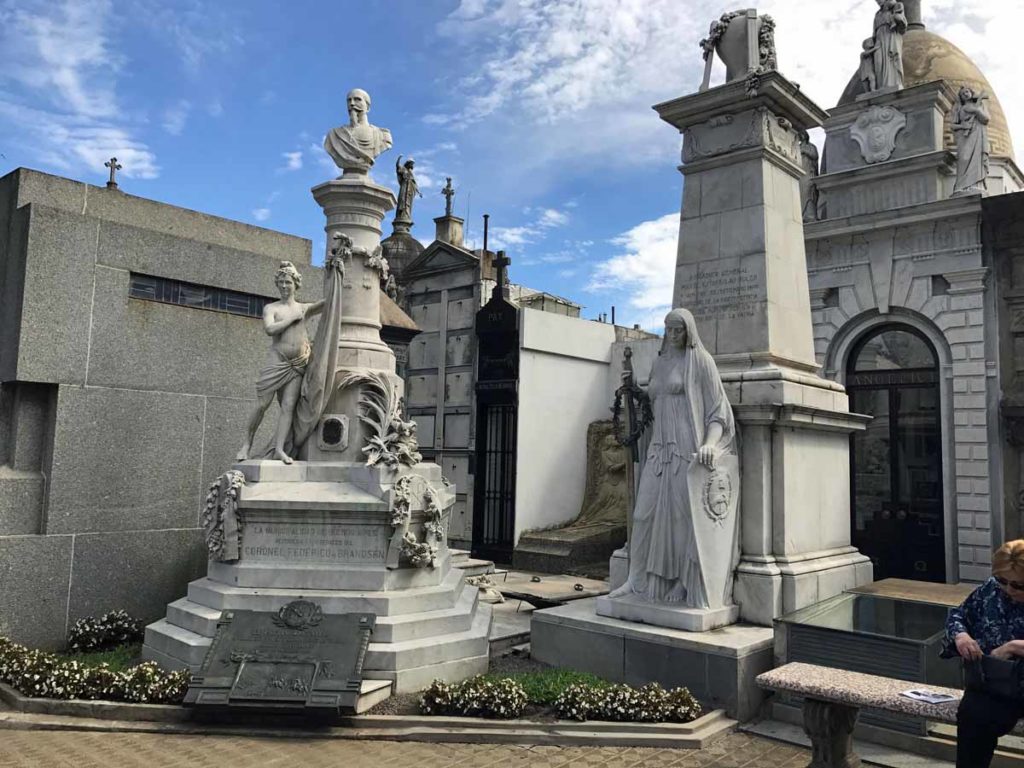
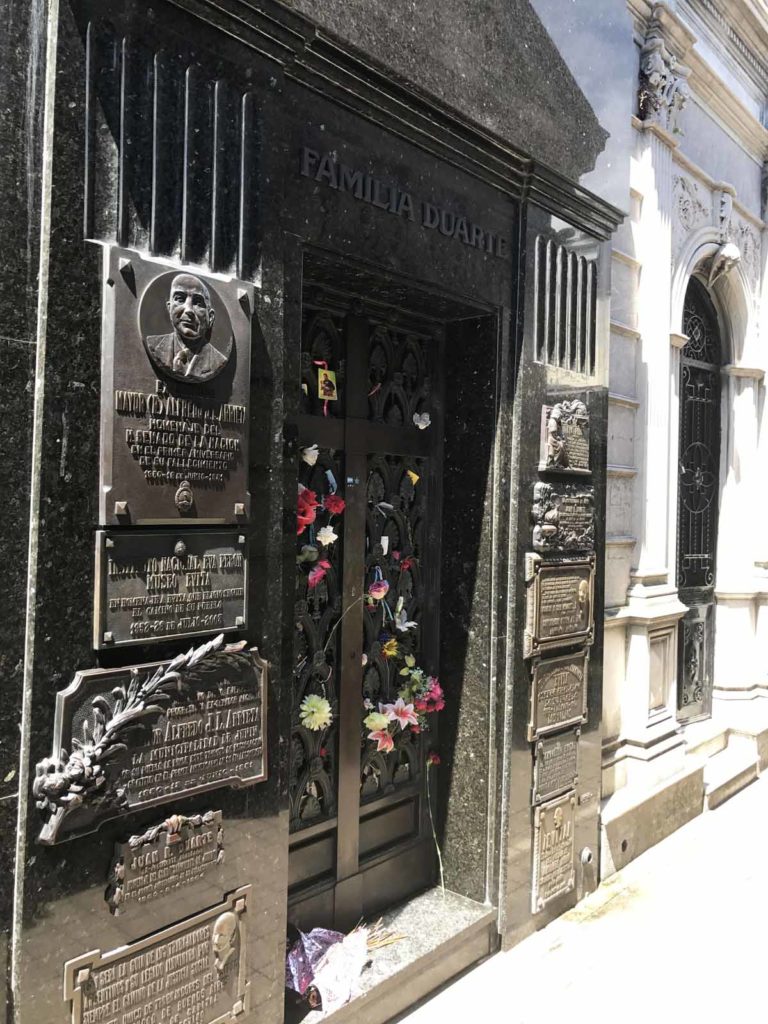
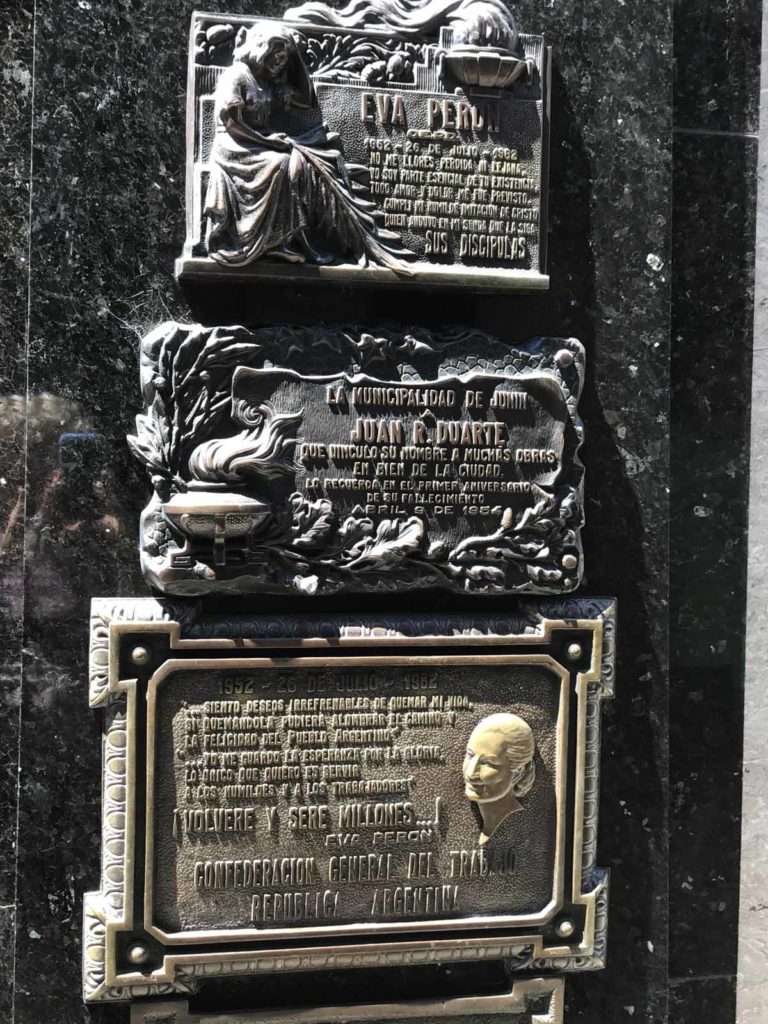
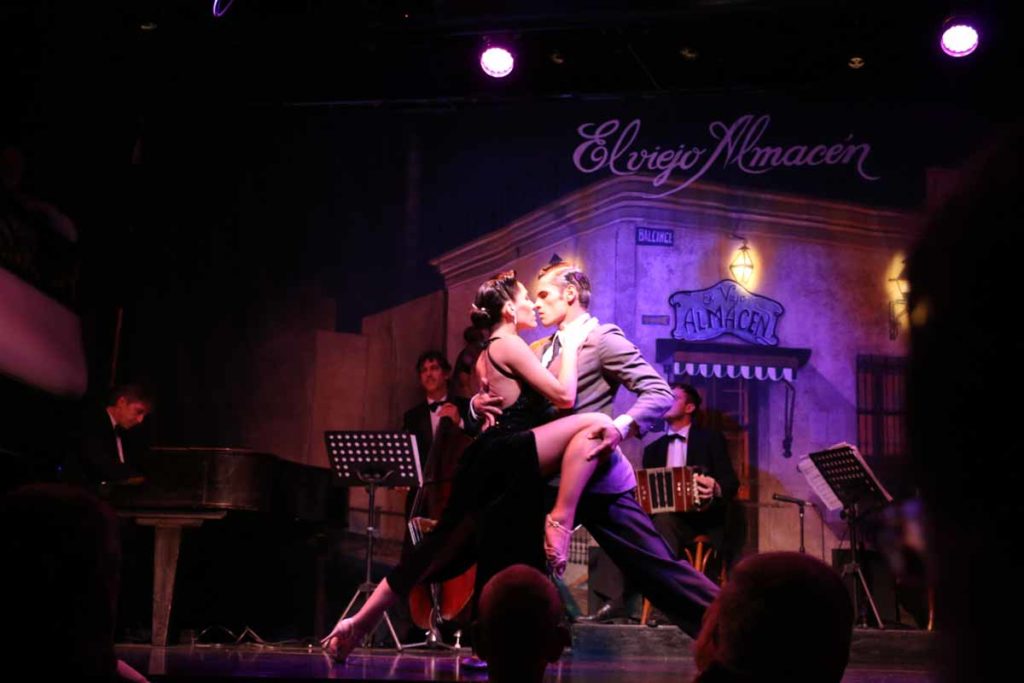
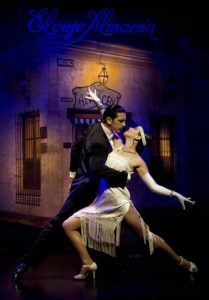
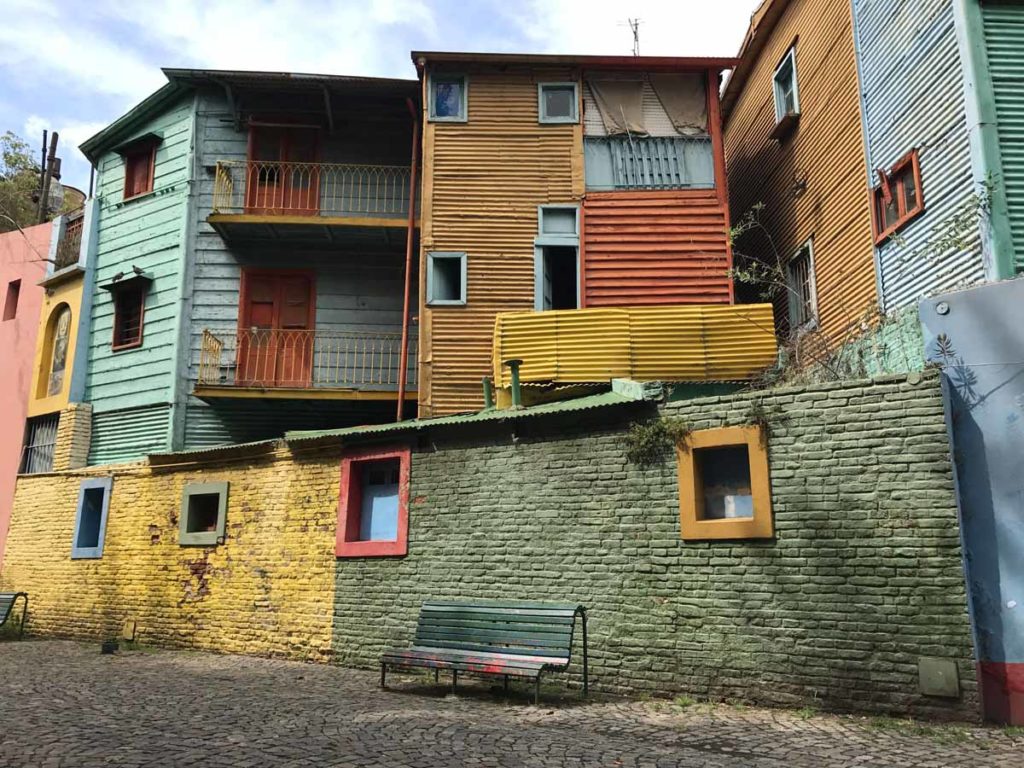
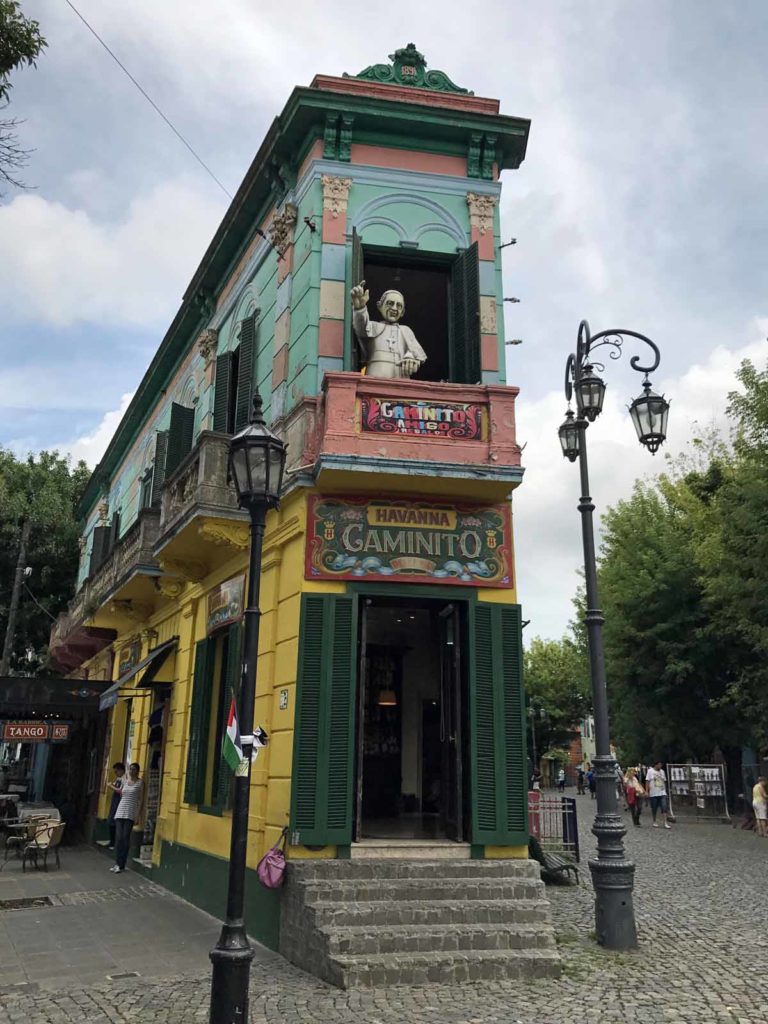
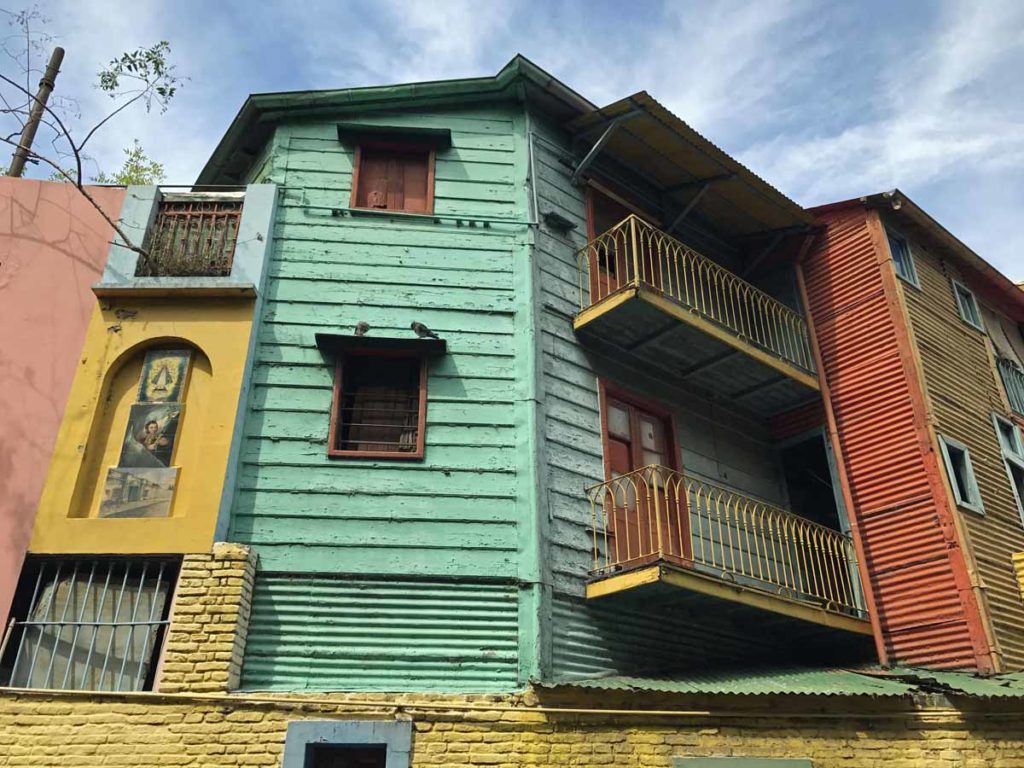
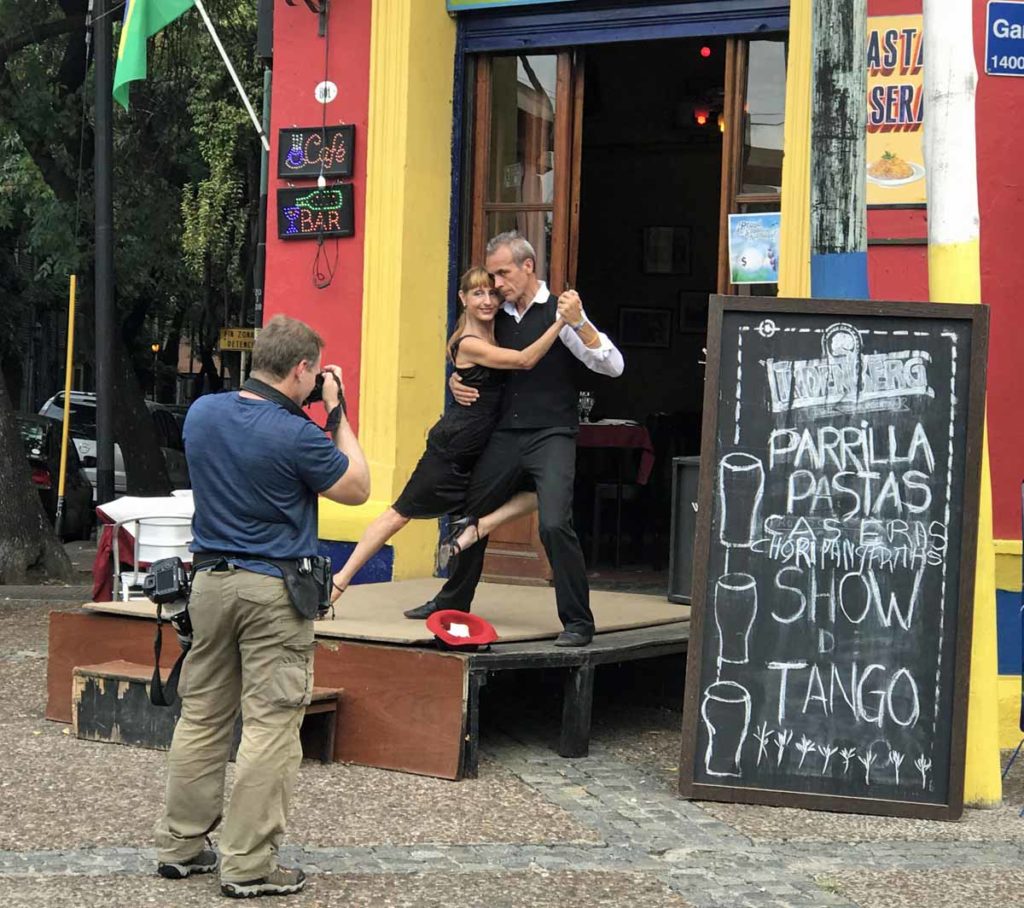
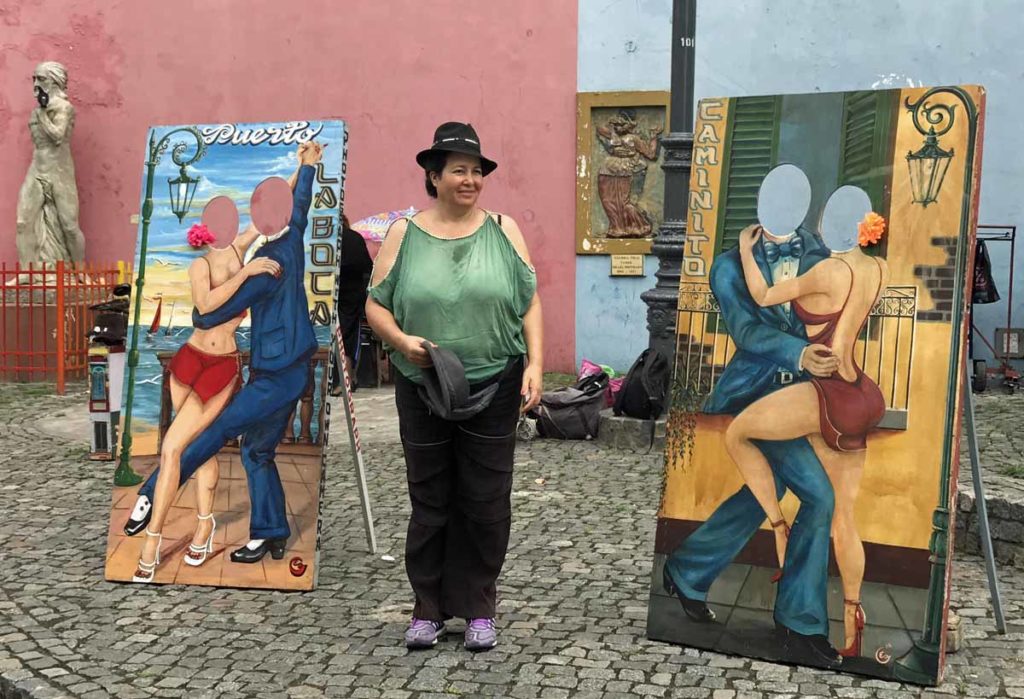
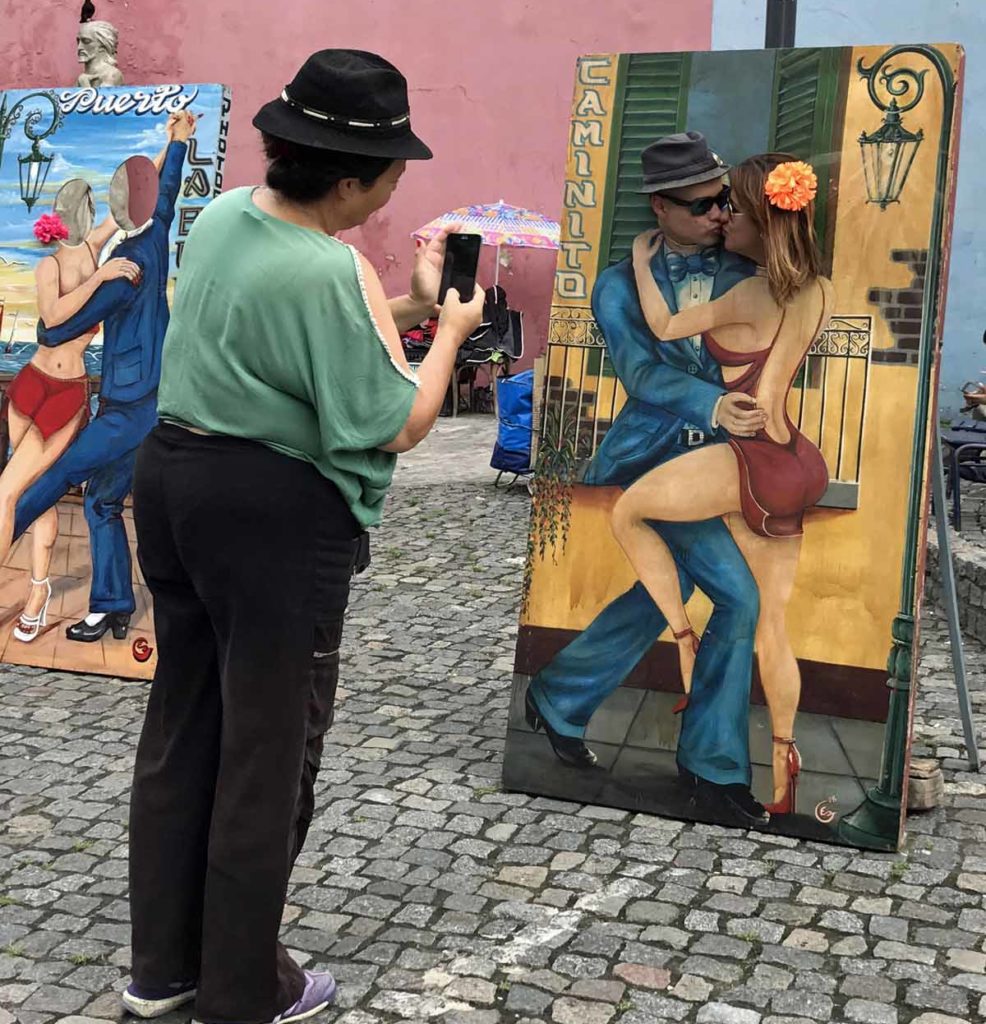
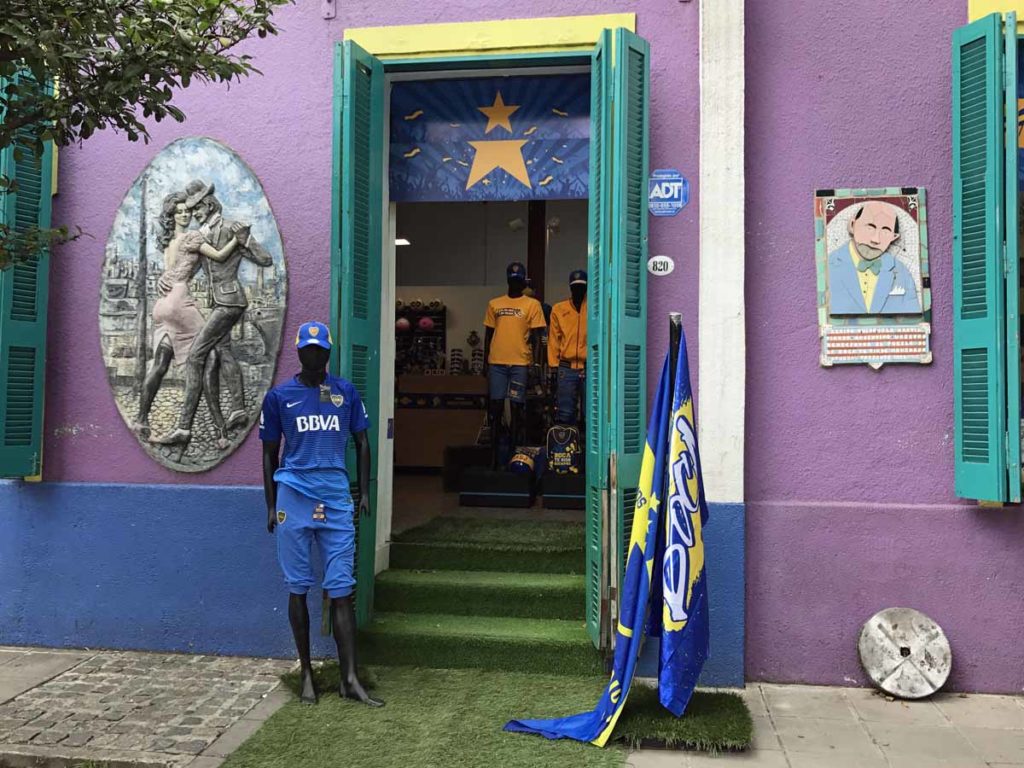
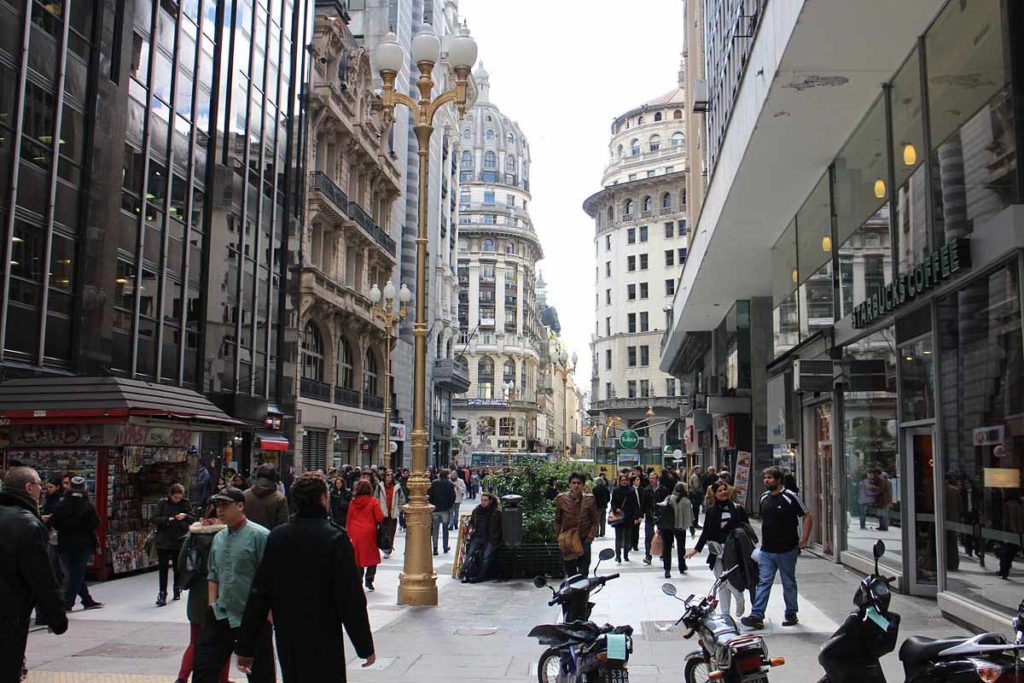
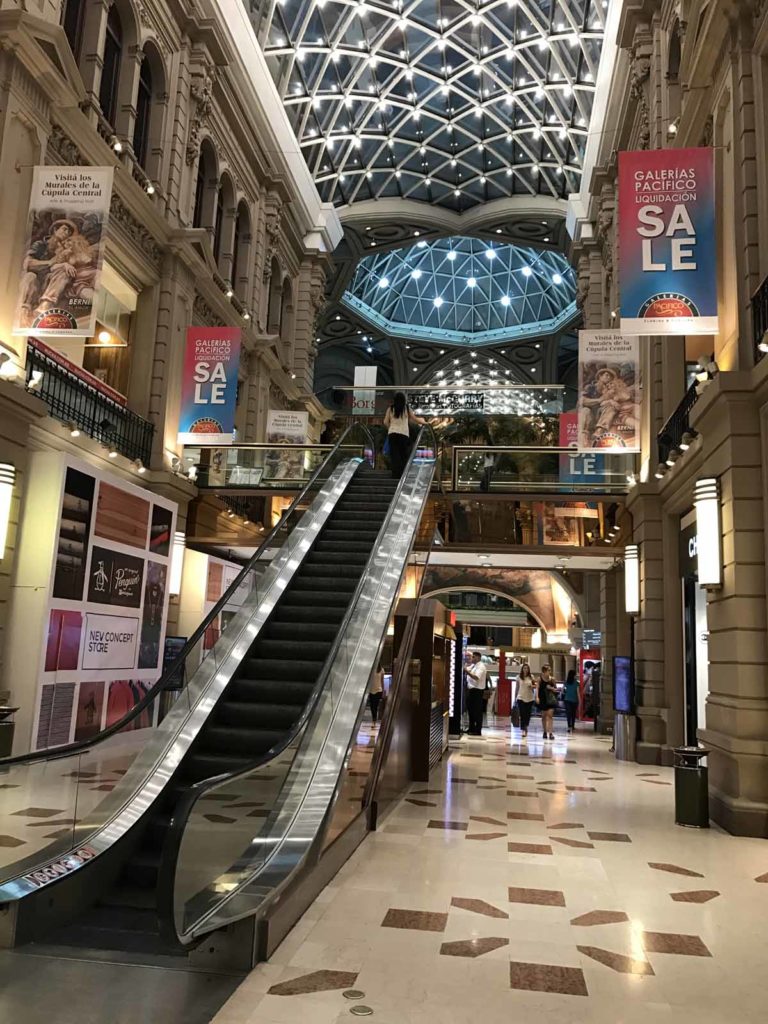
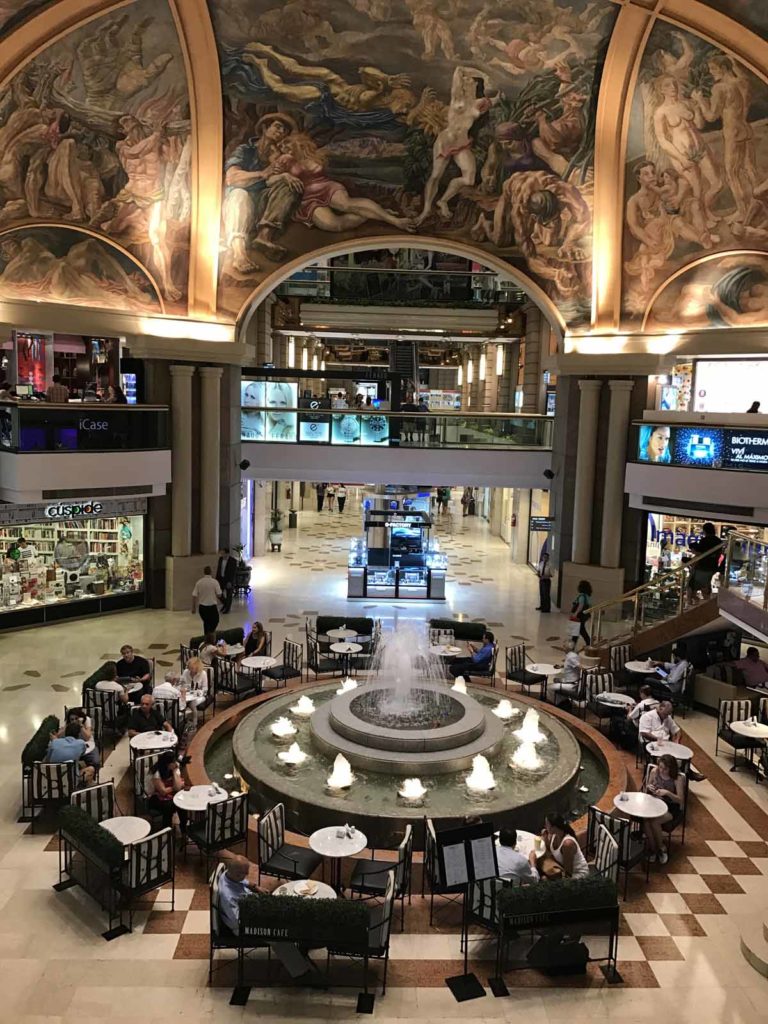
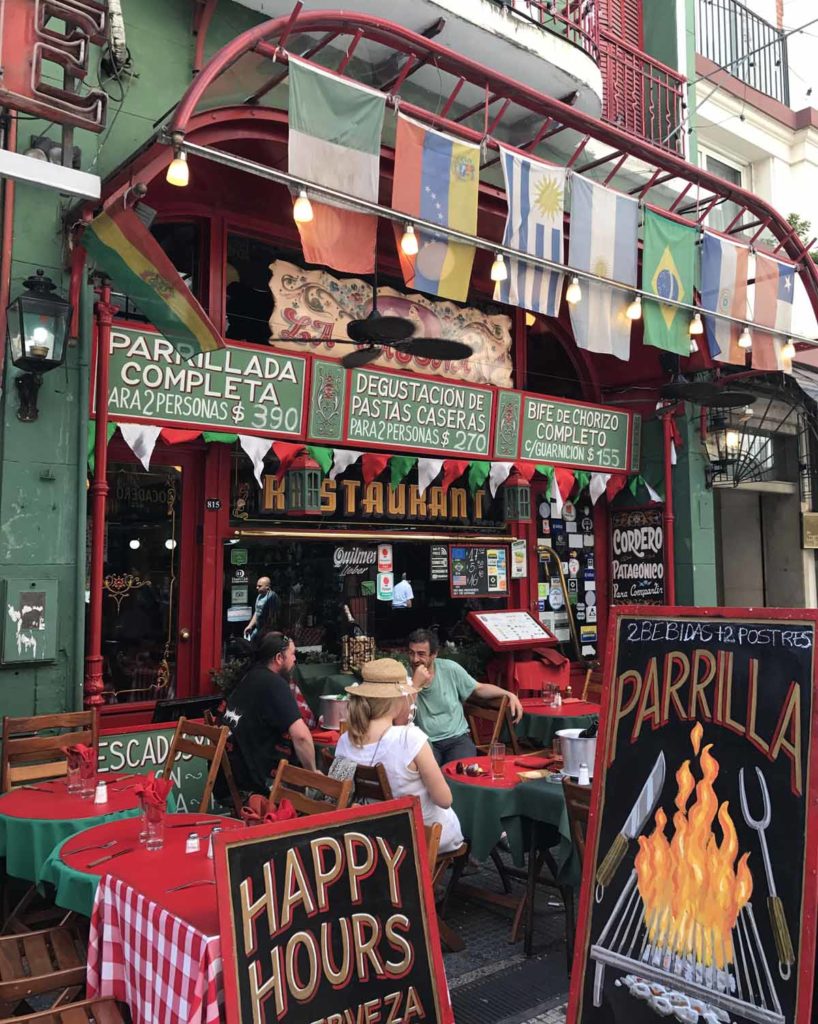

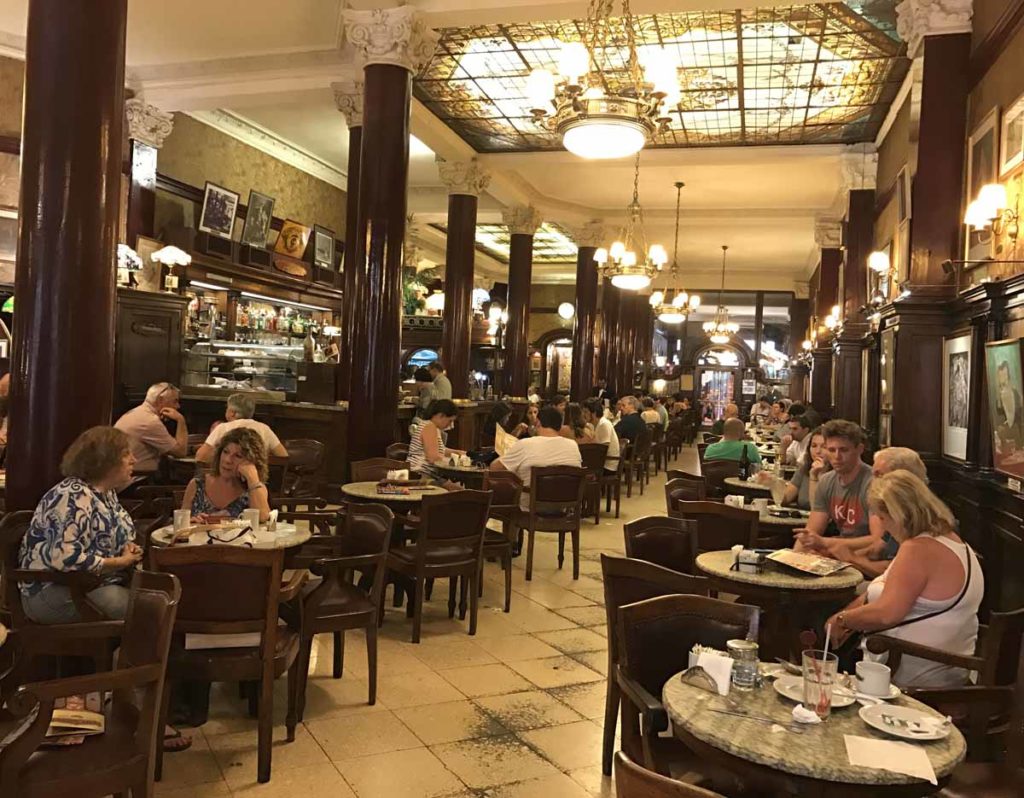
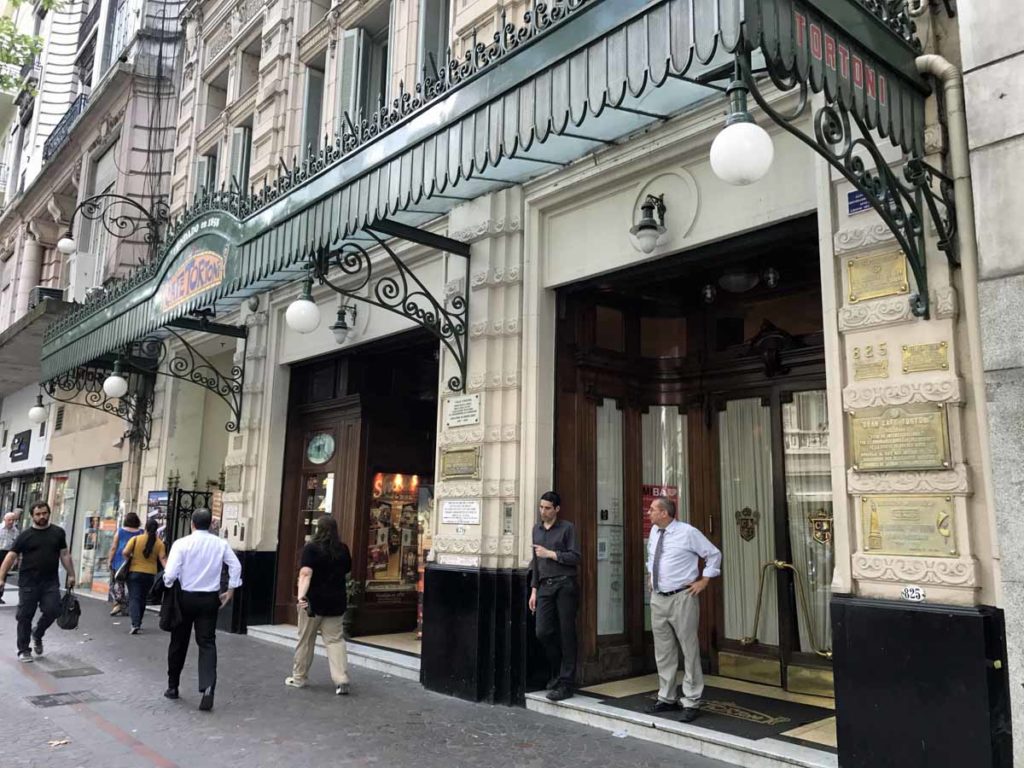
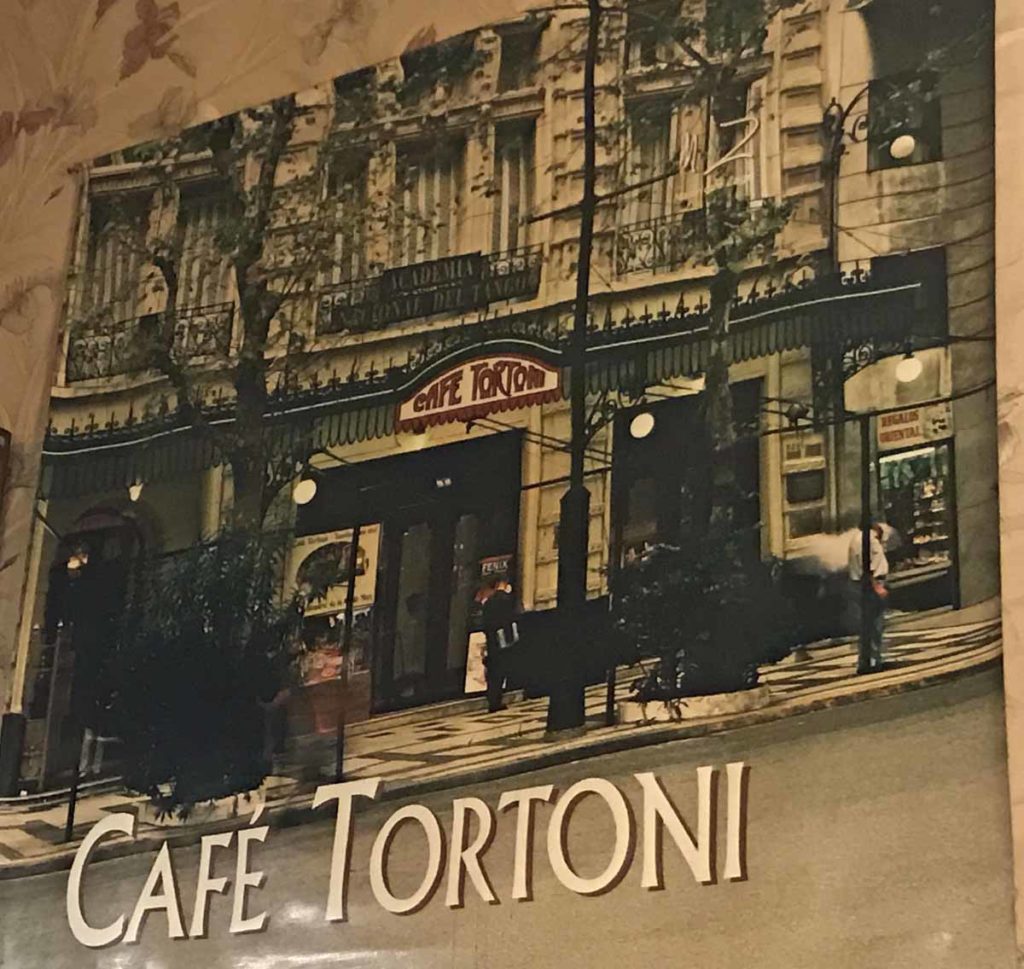
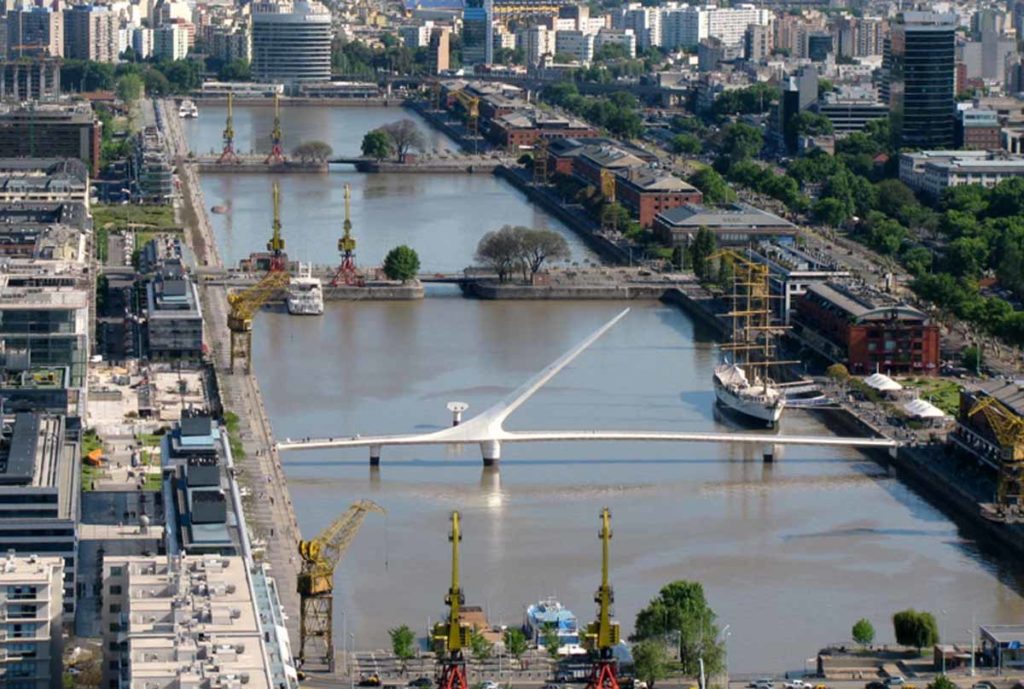
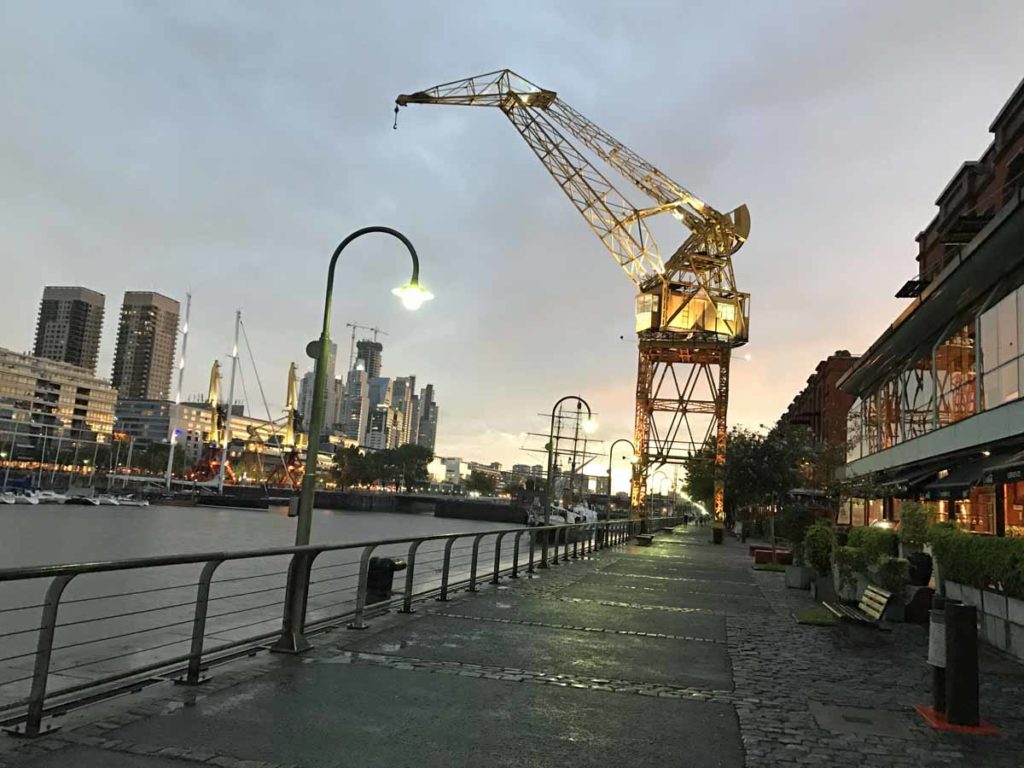
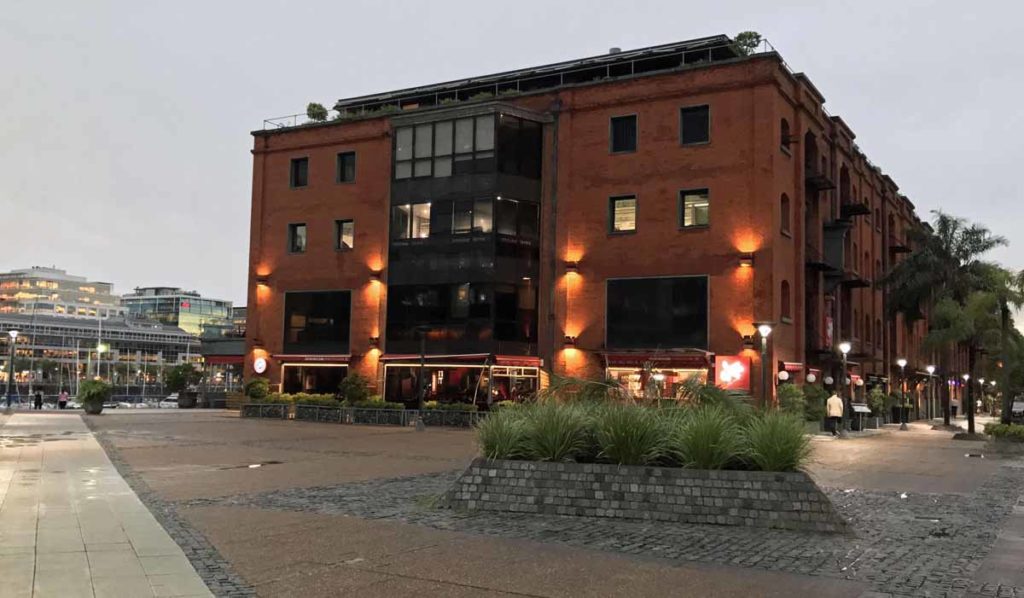
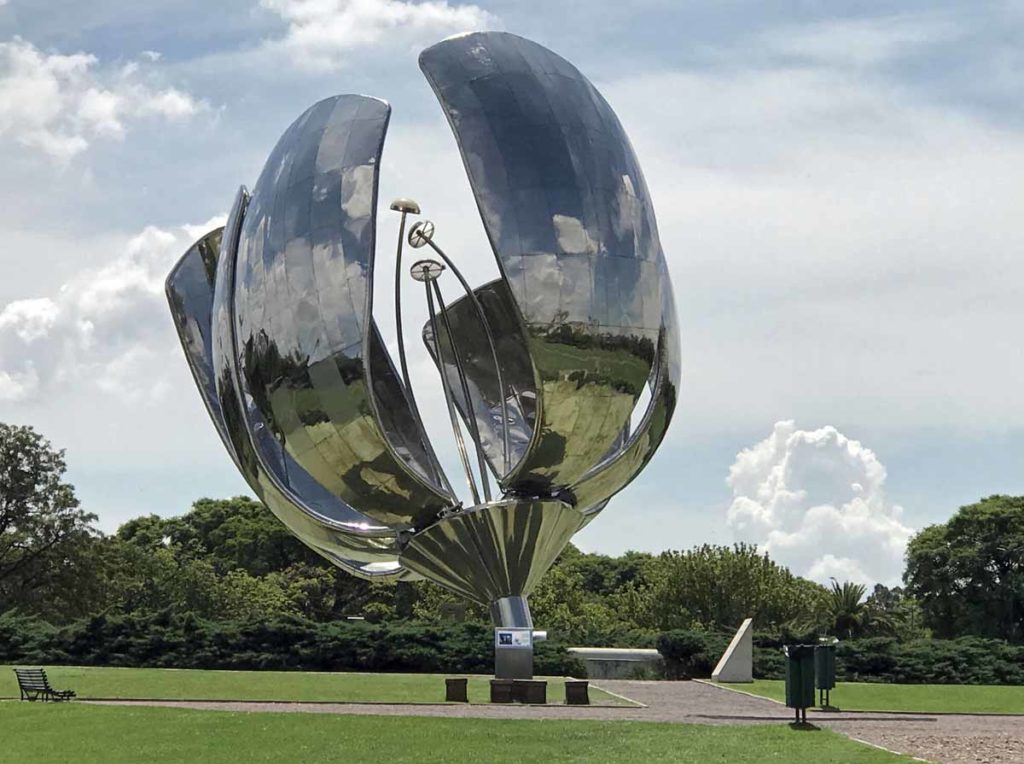
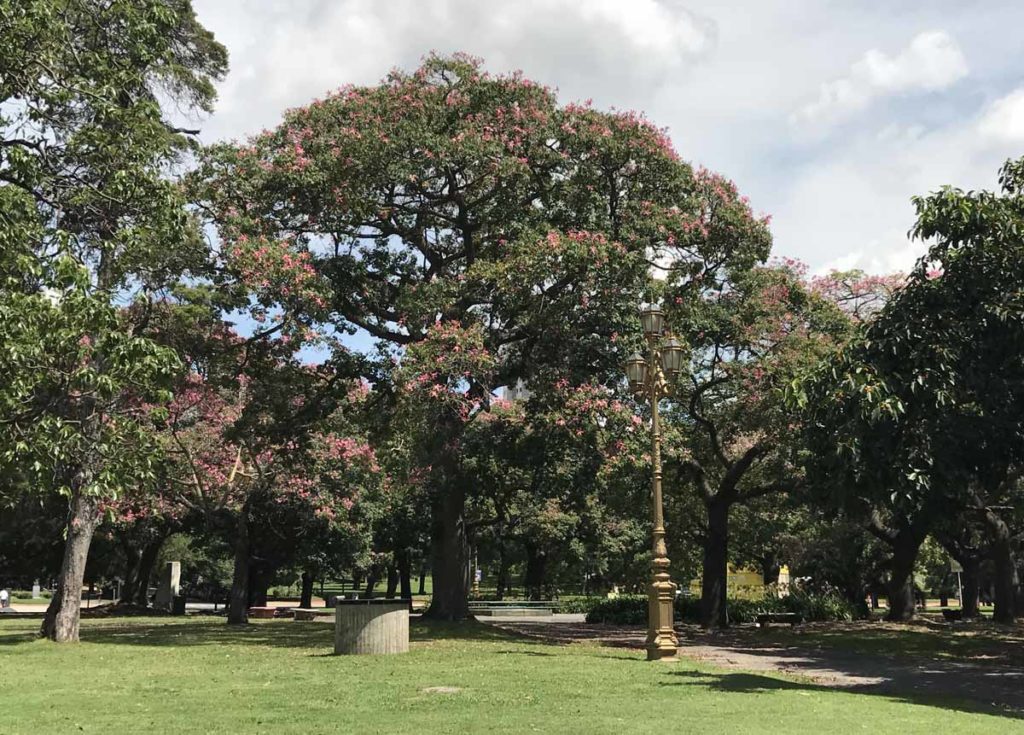
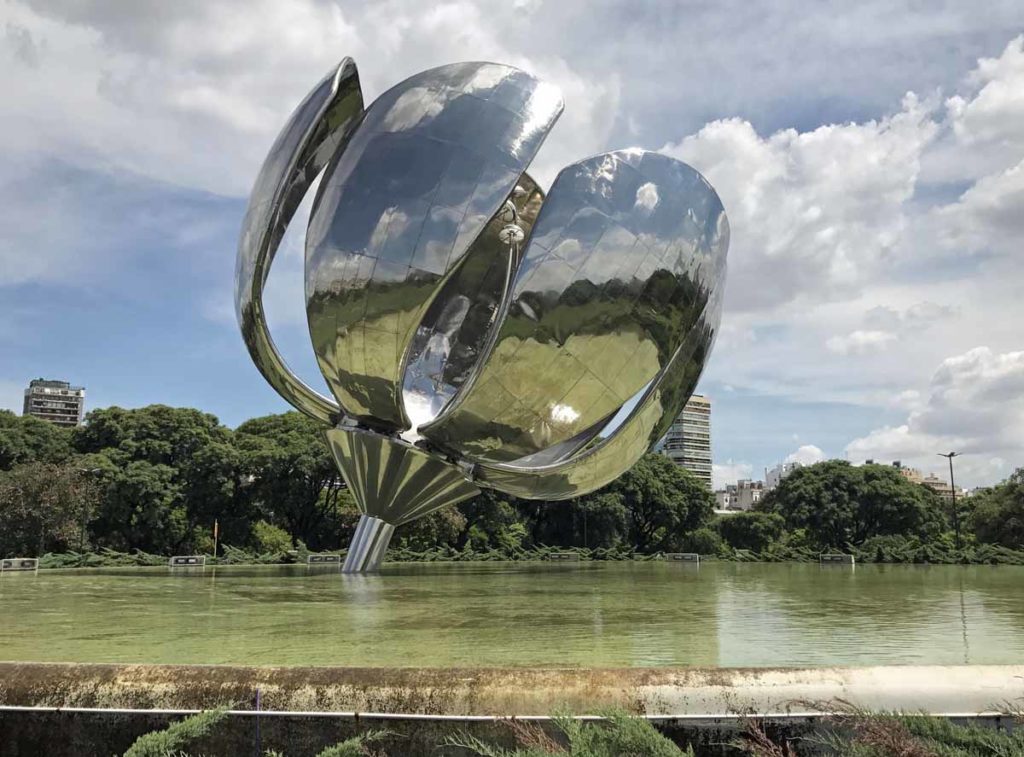
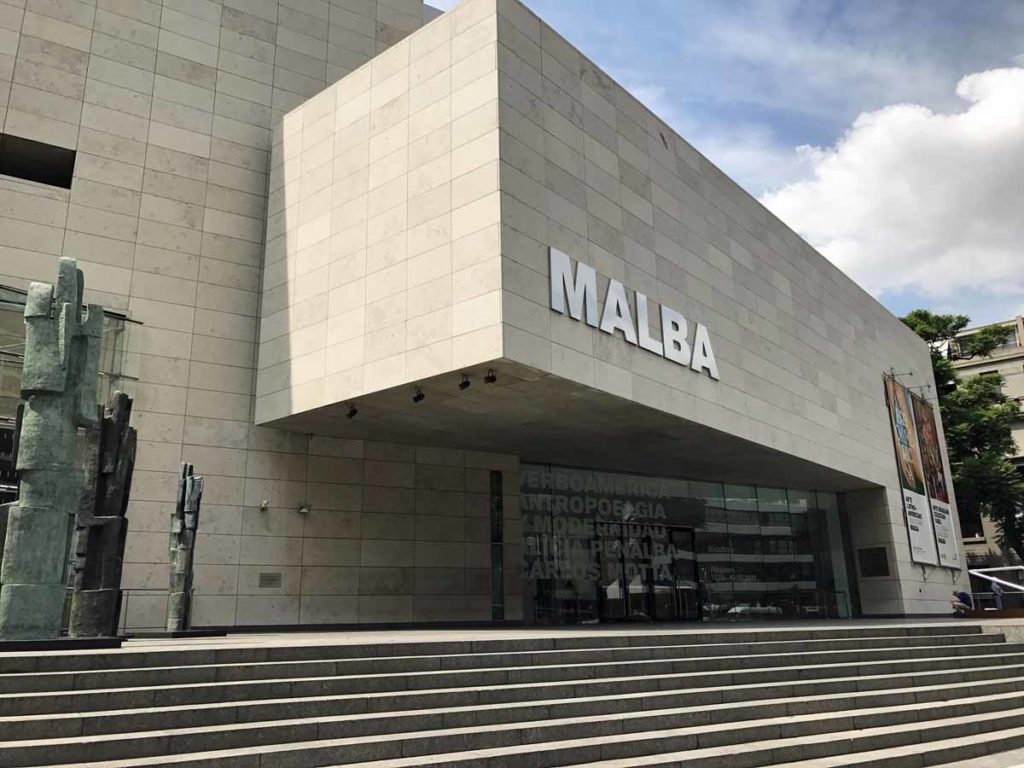
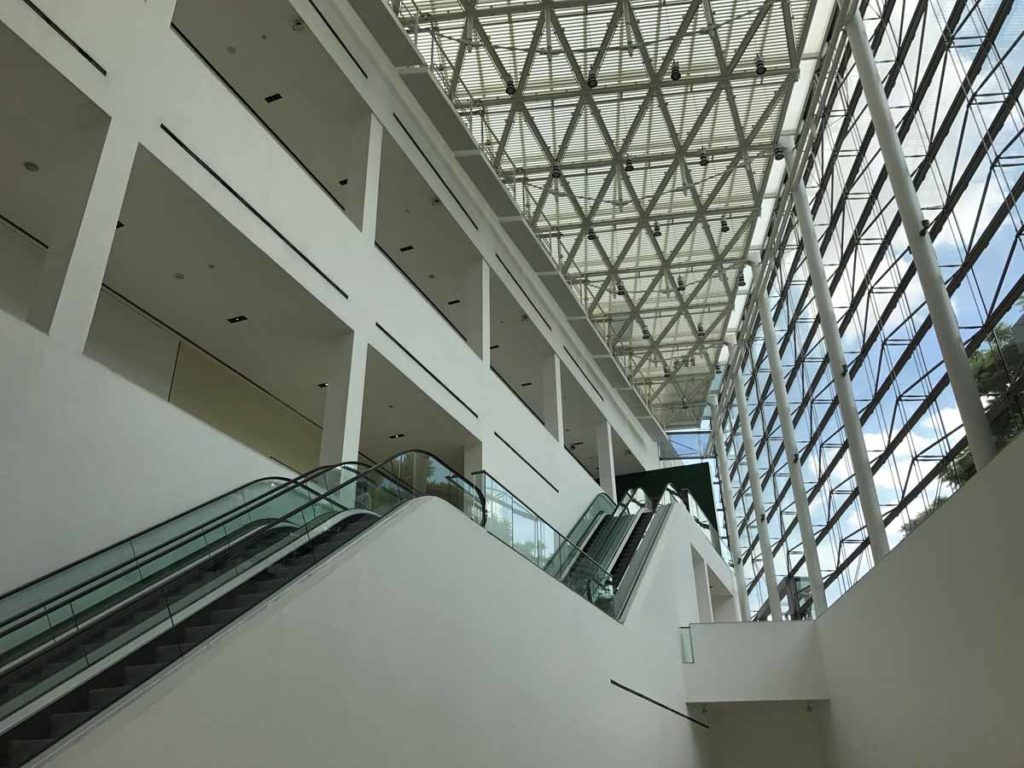
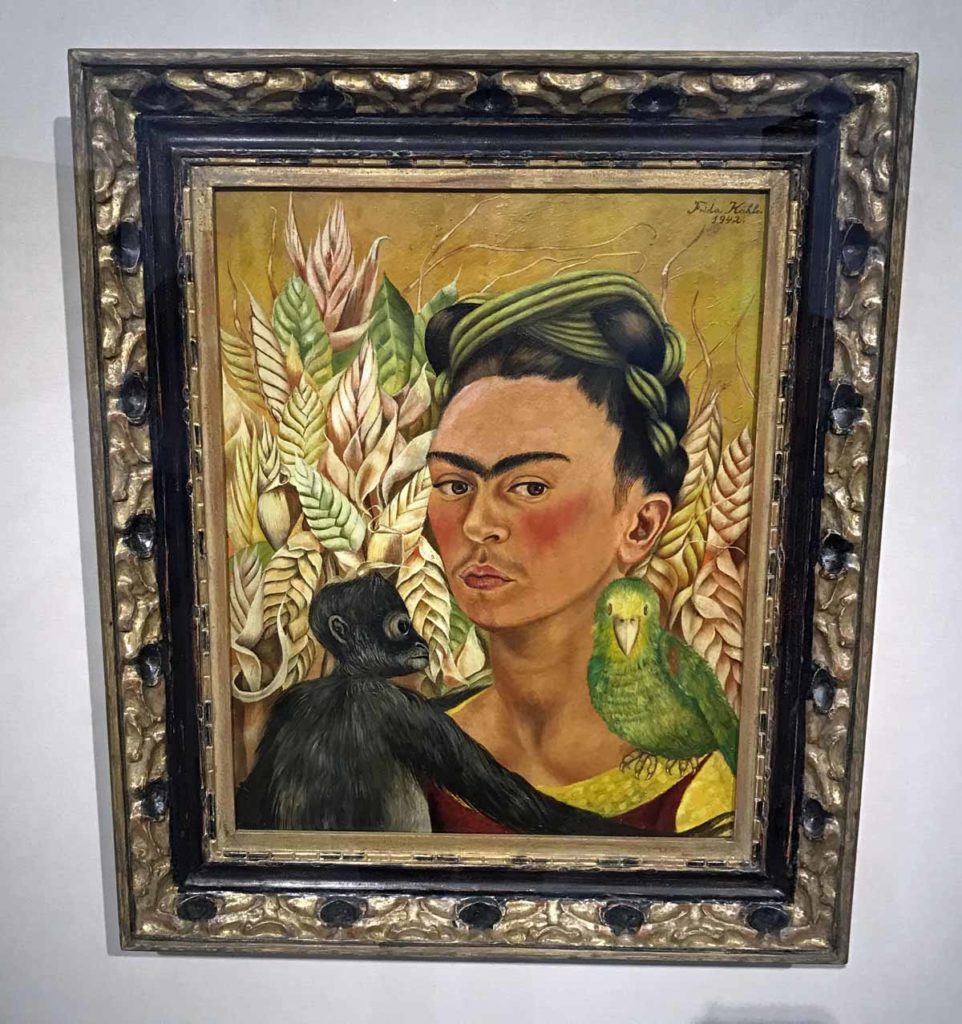
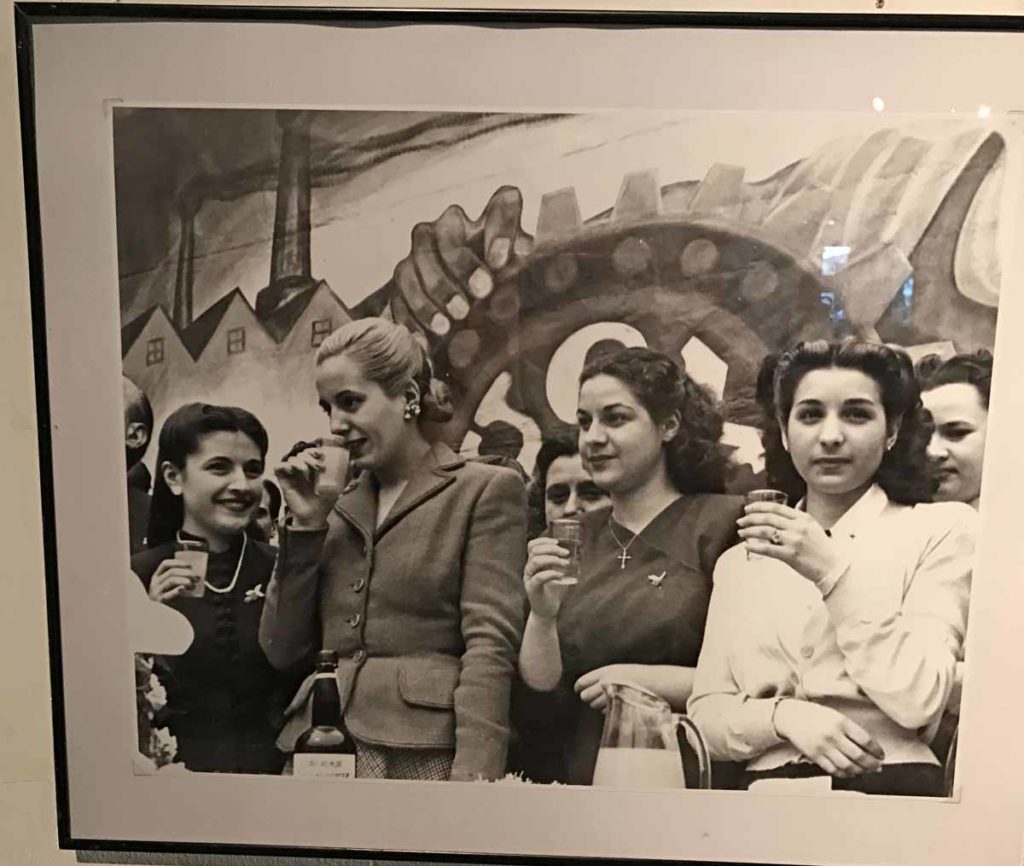
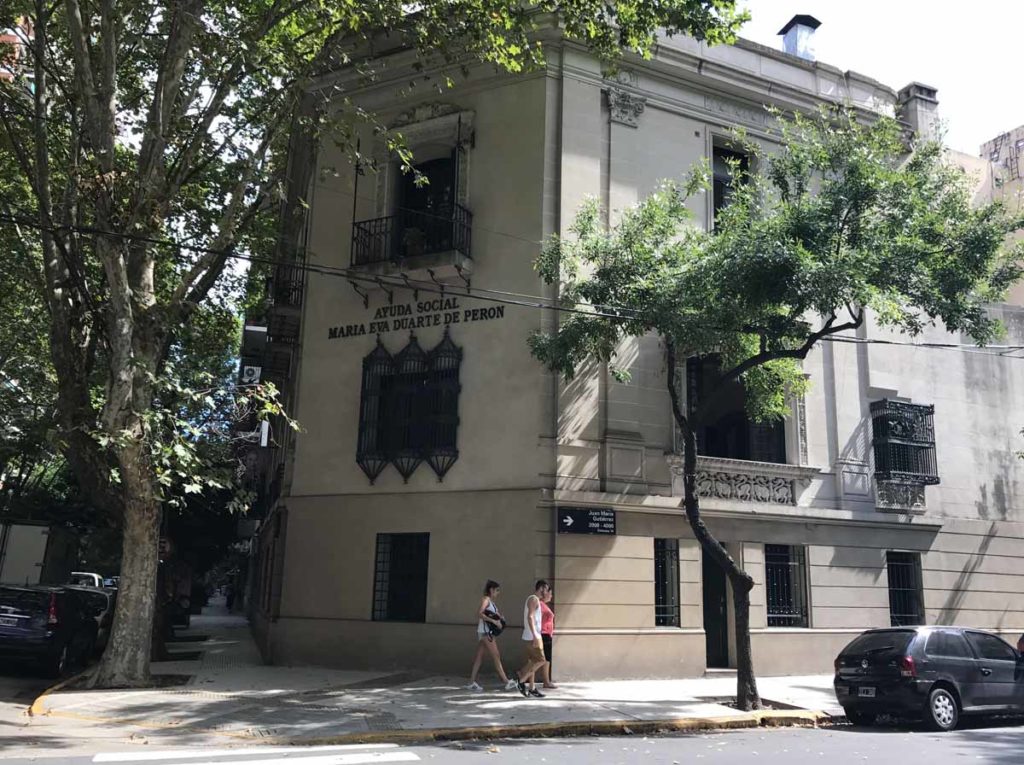
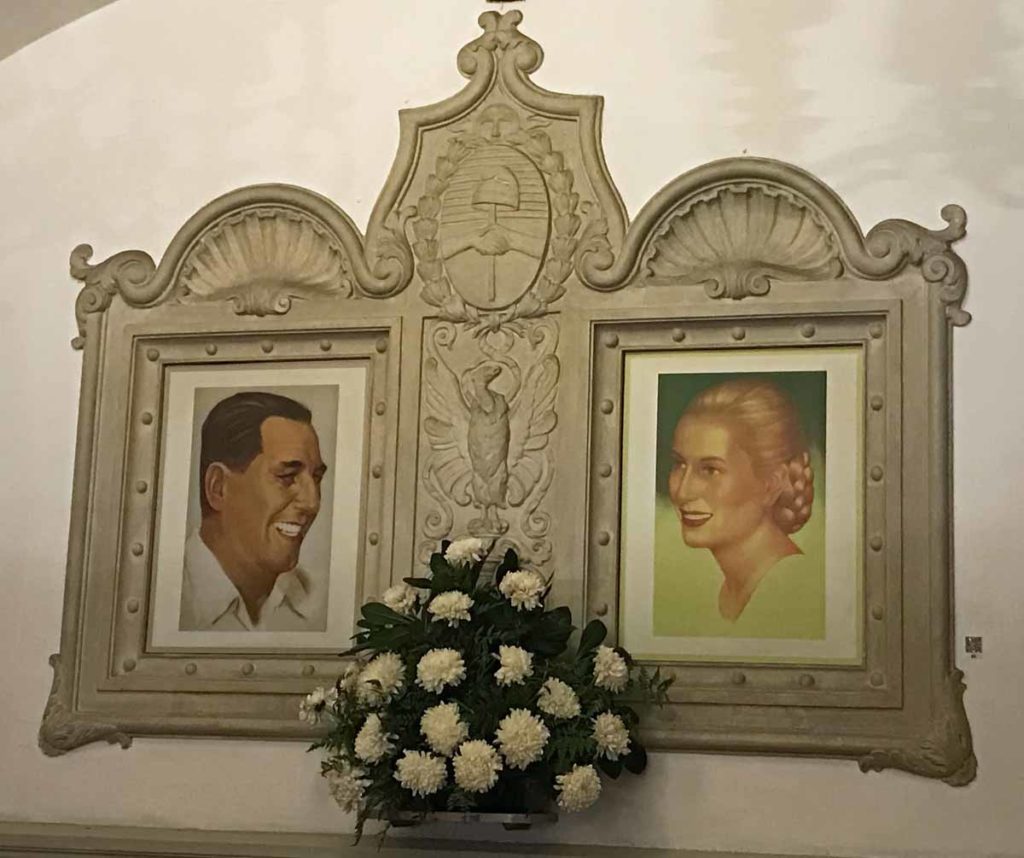
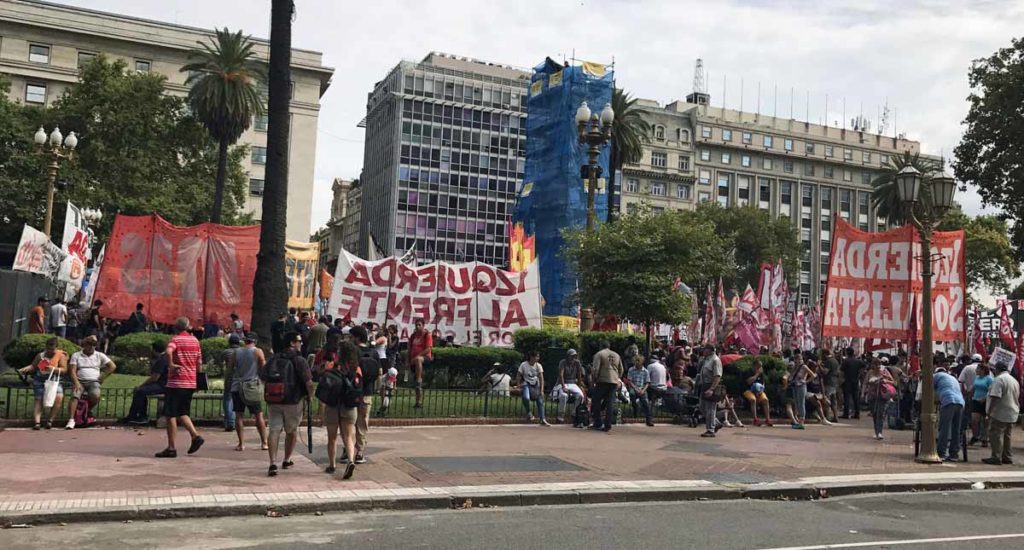
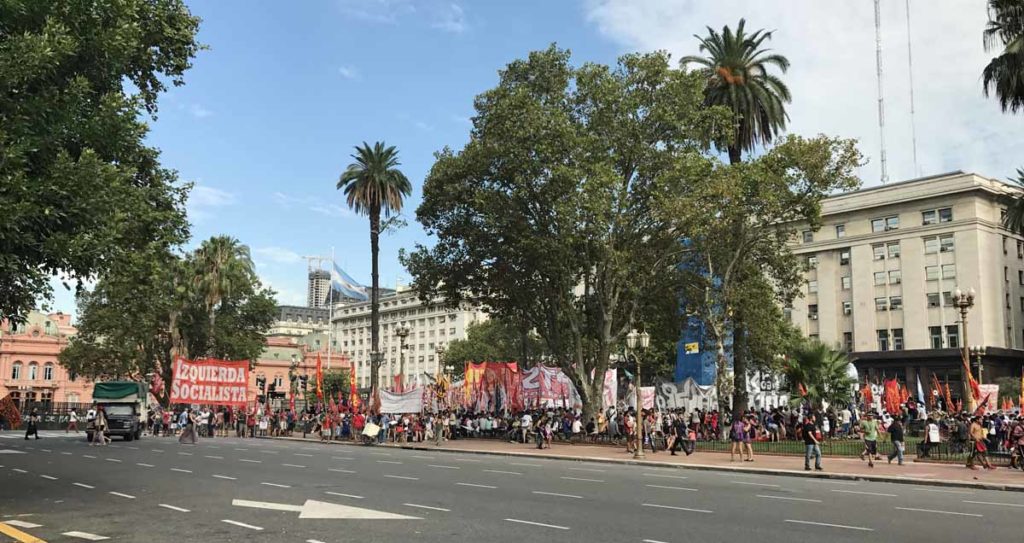
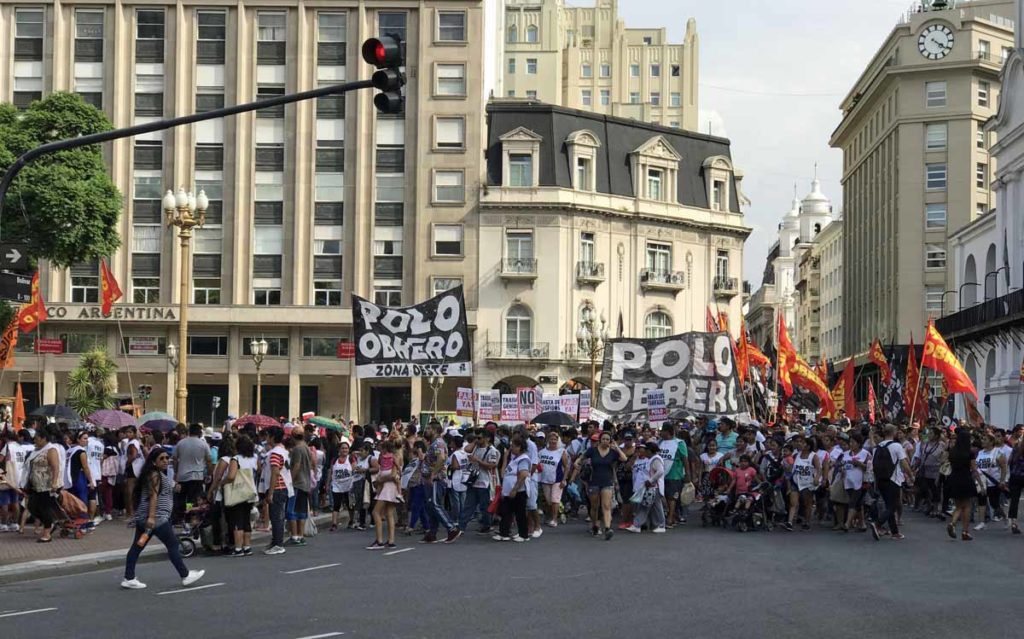
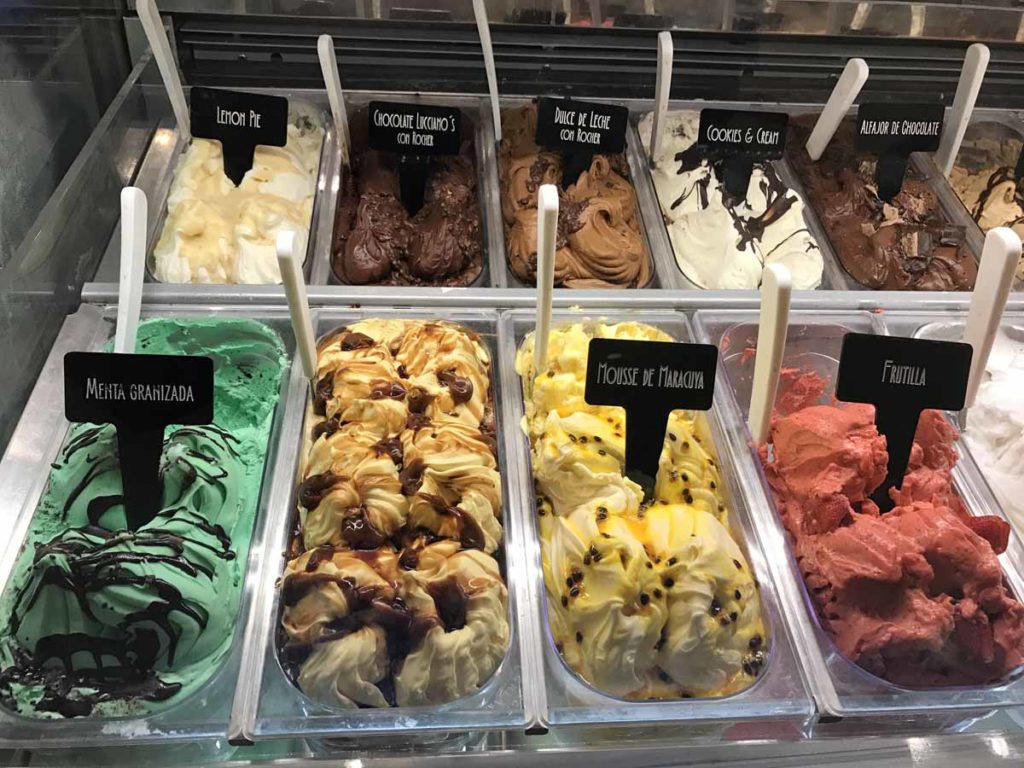
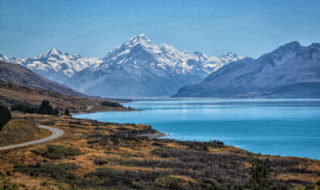
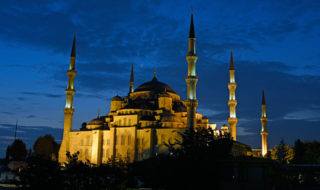
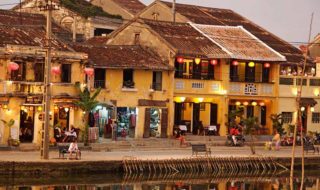
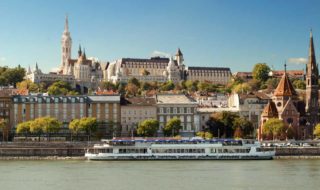
Post a Comment